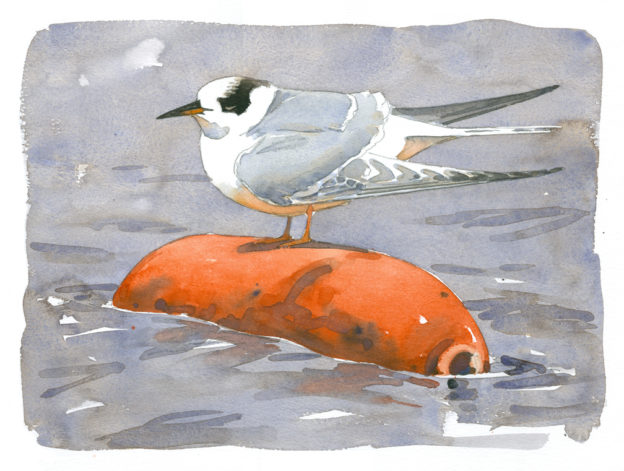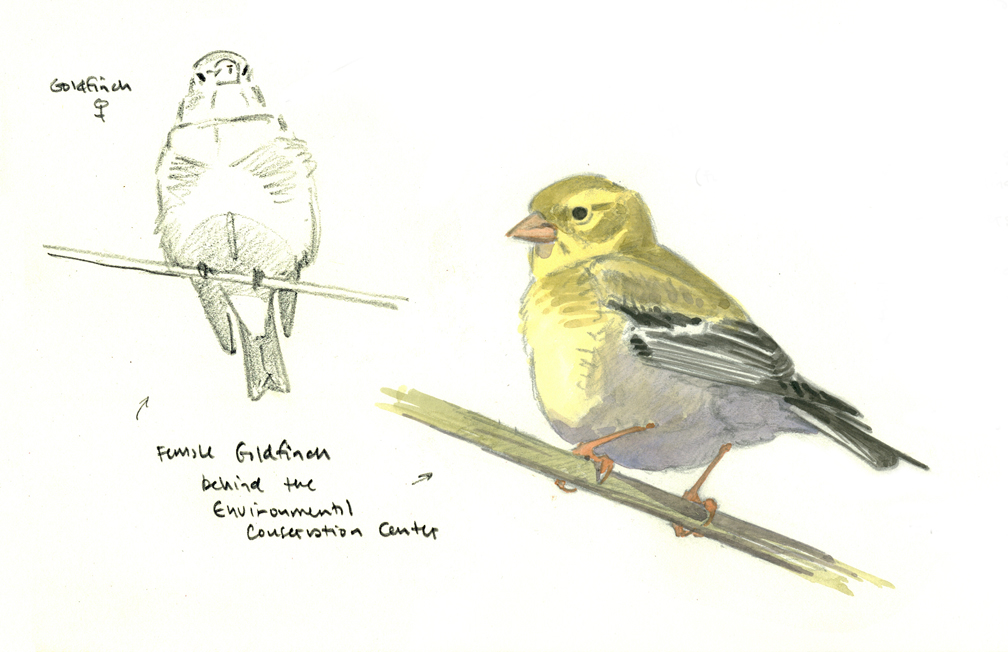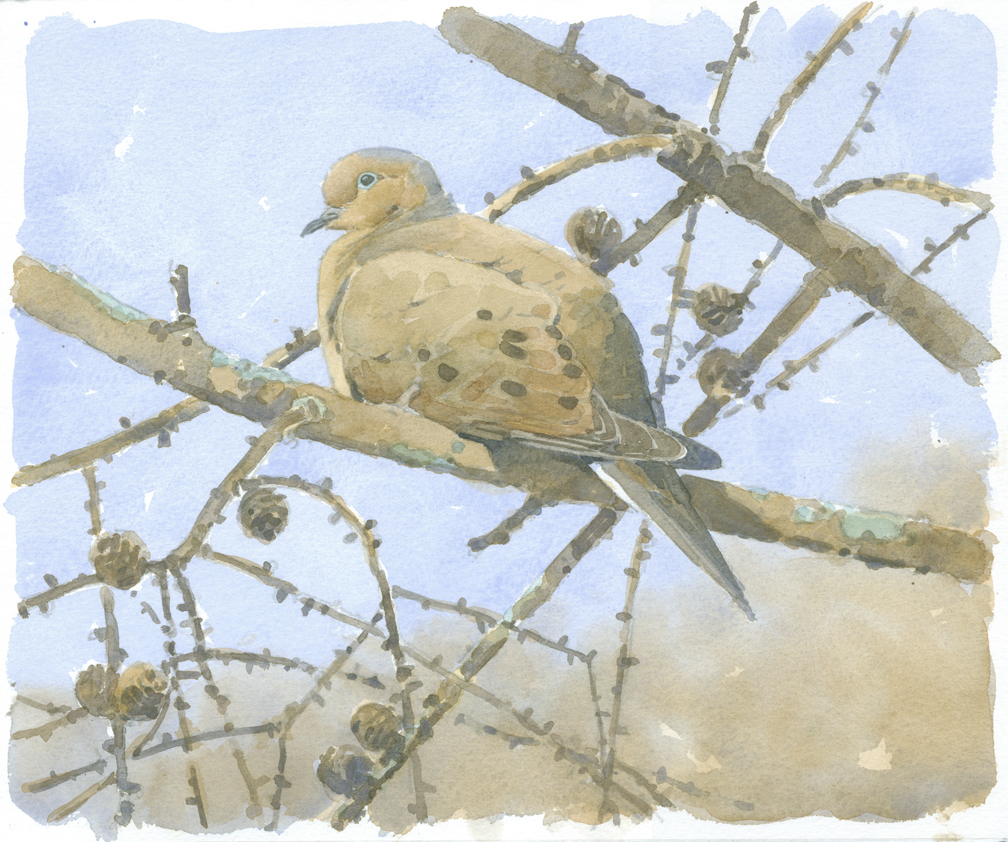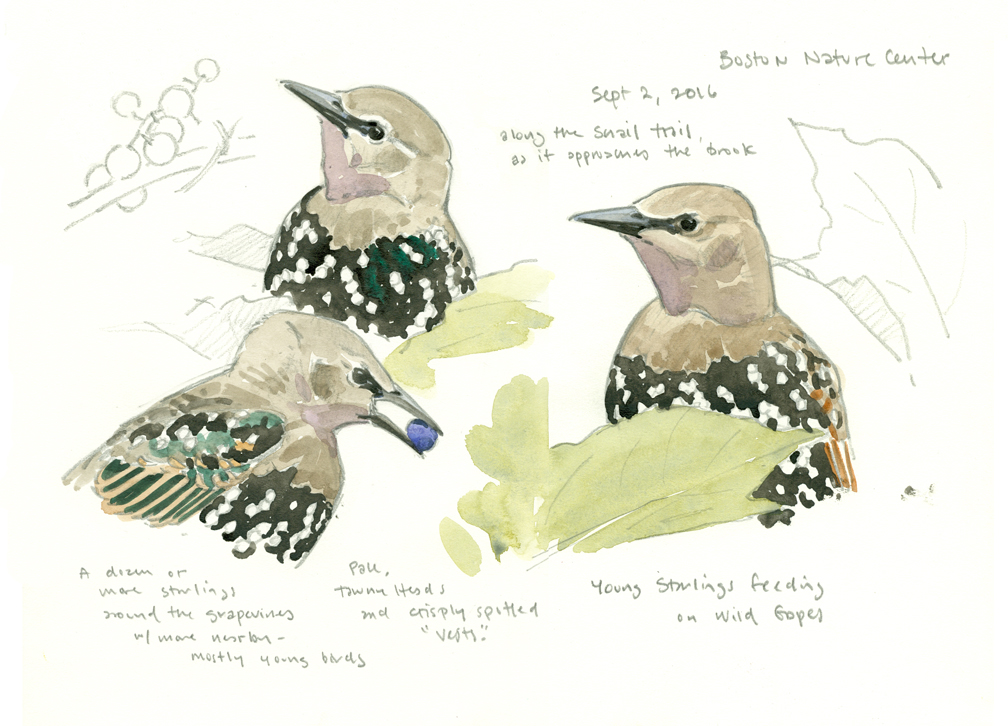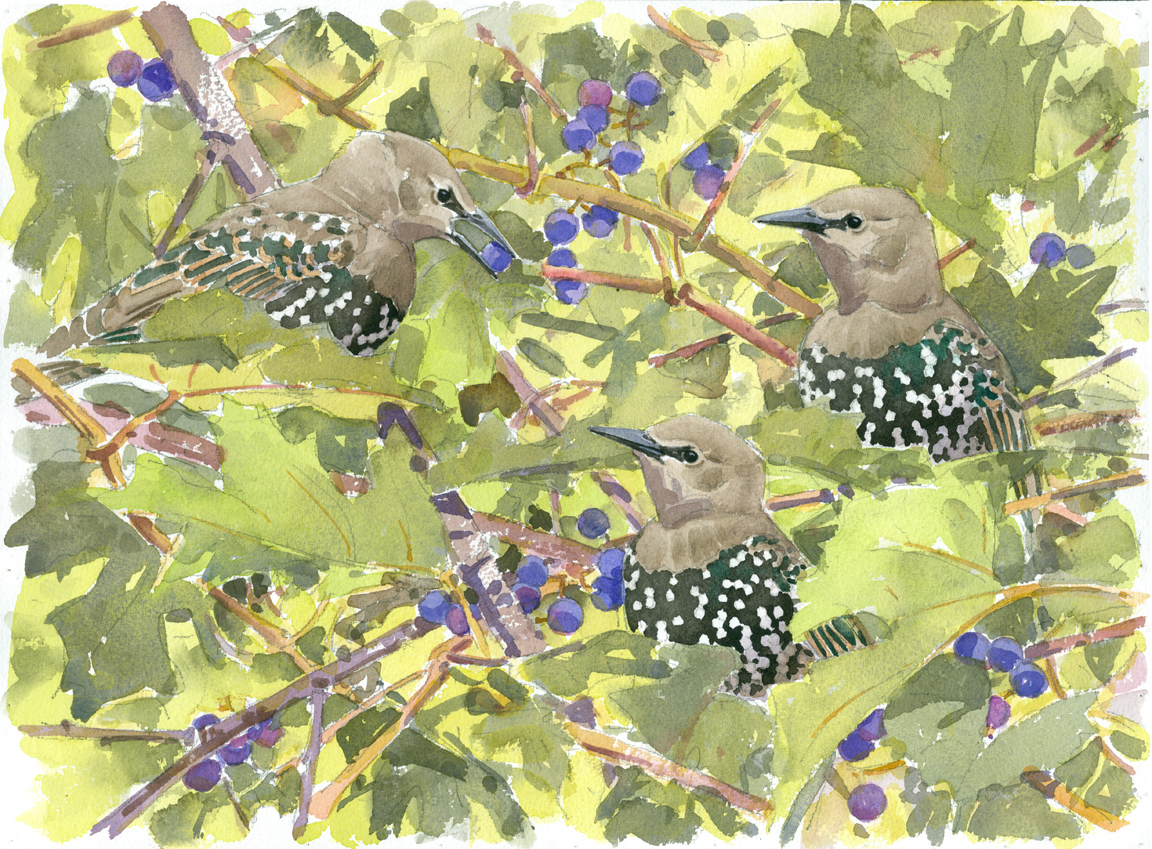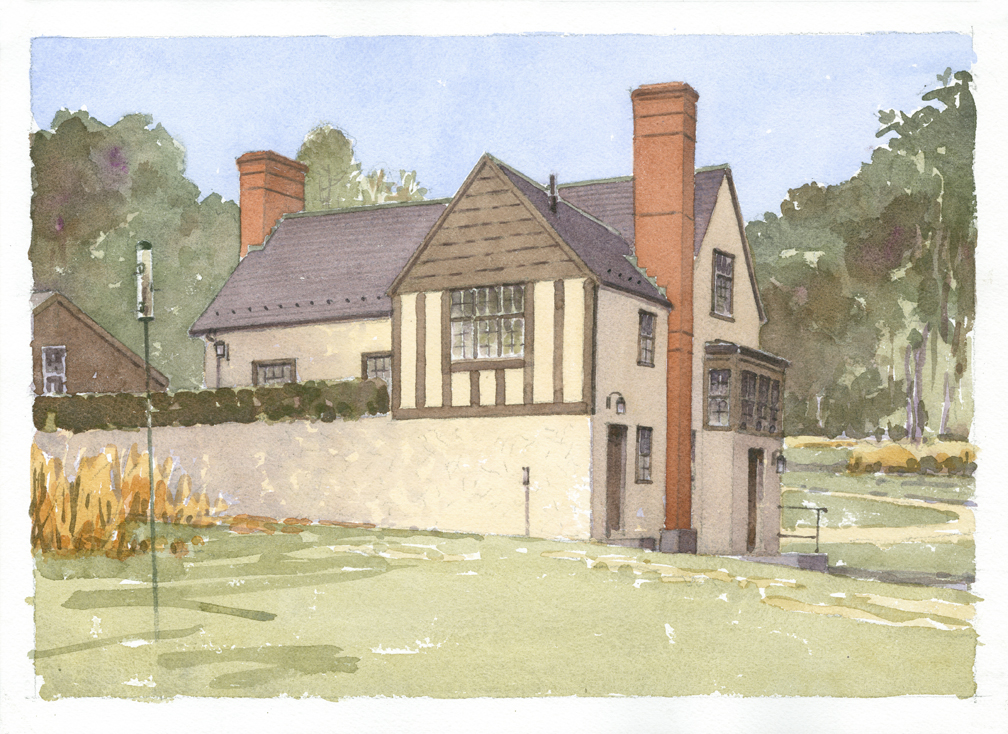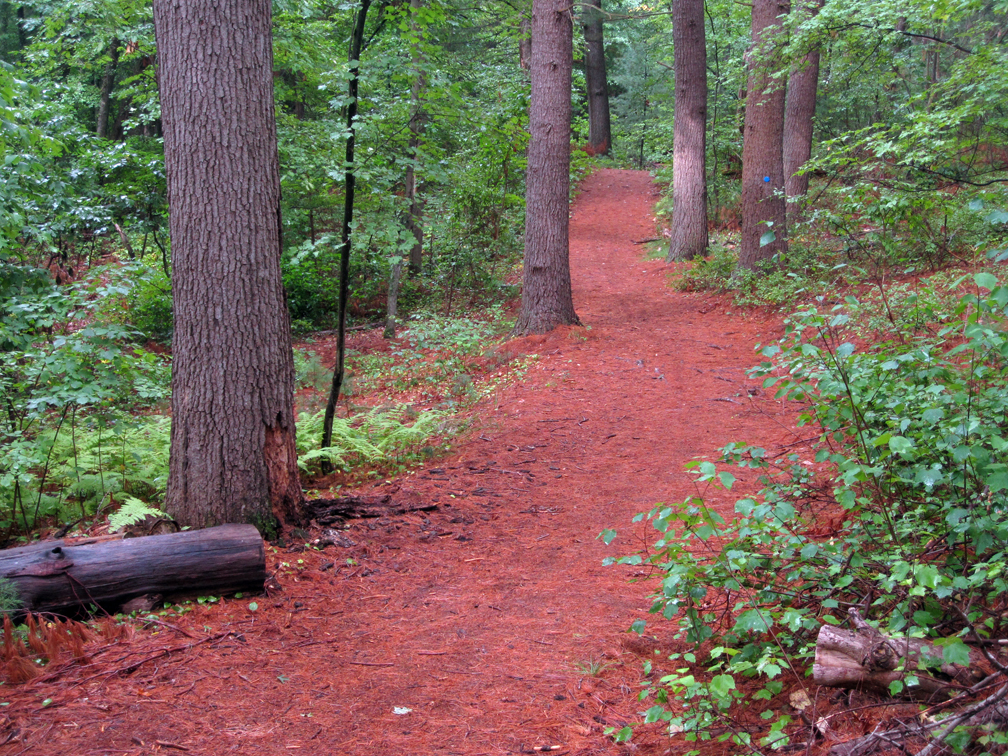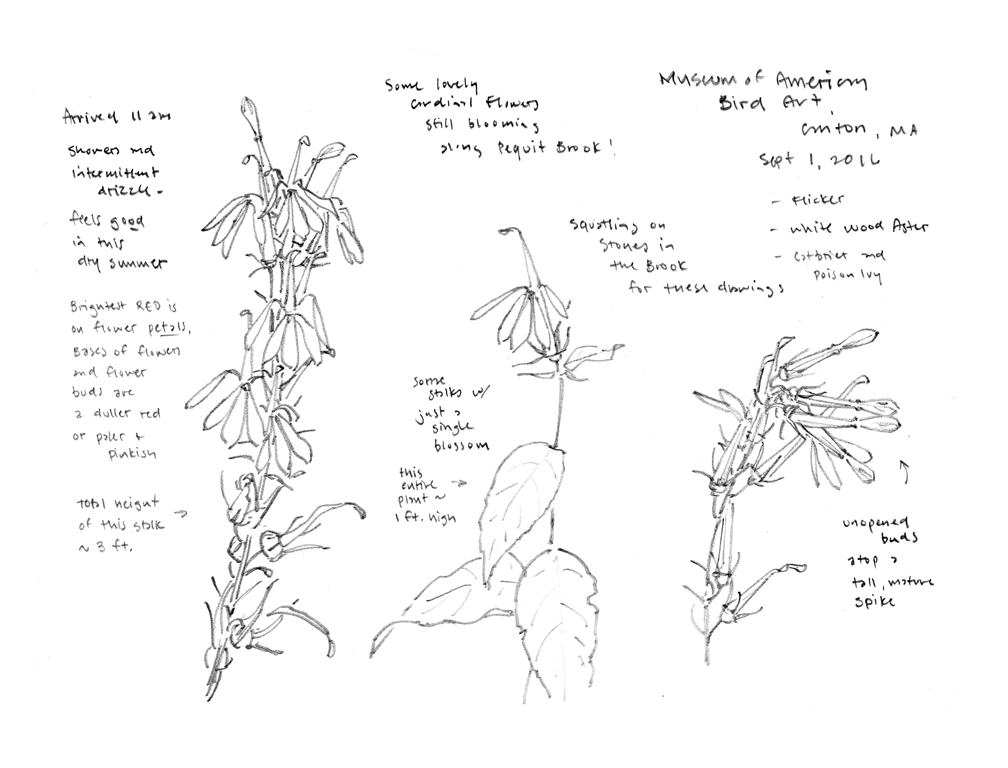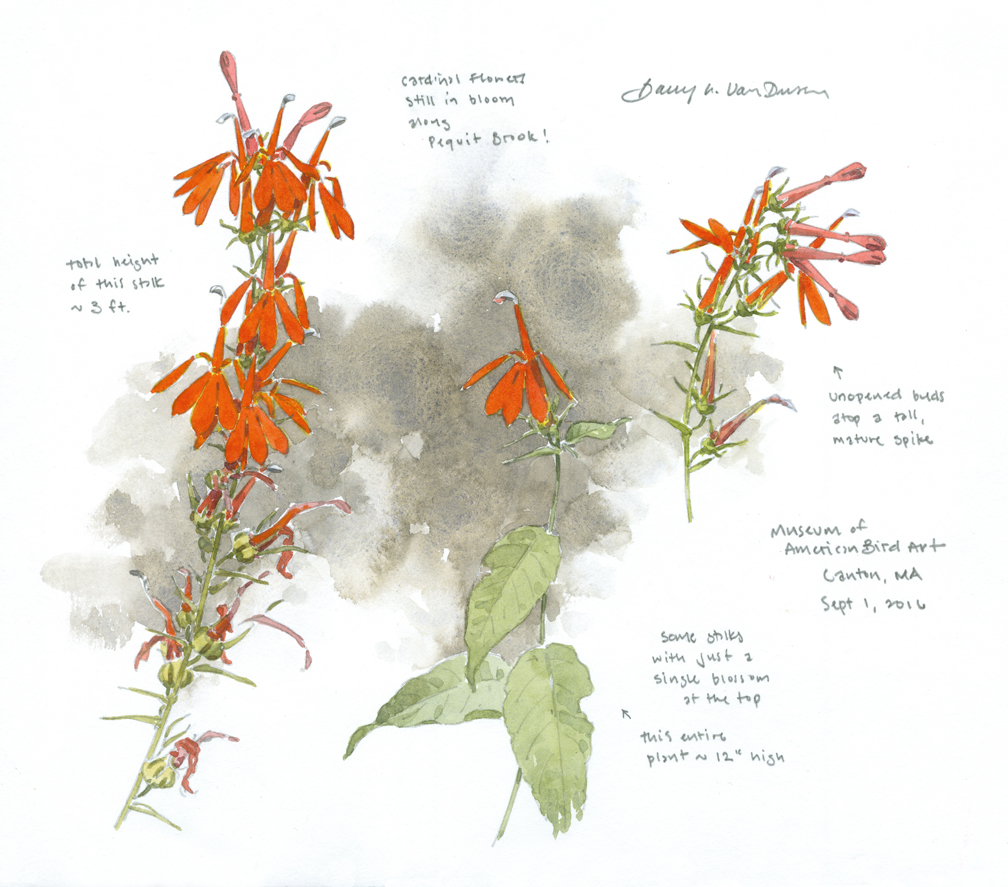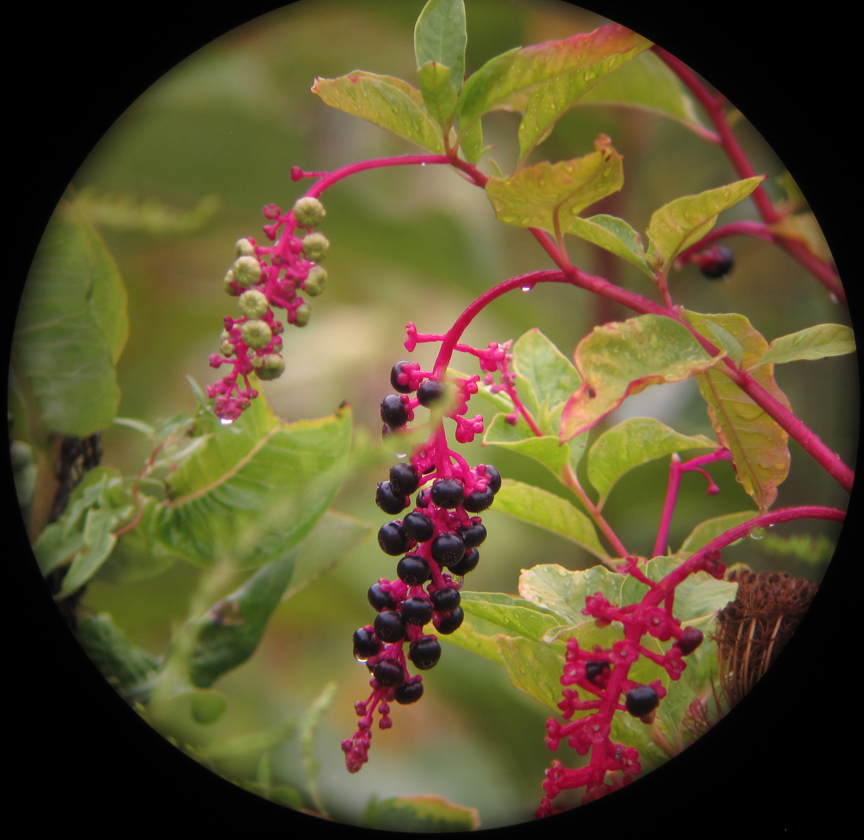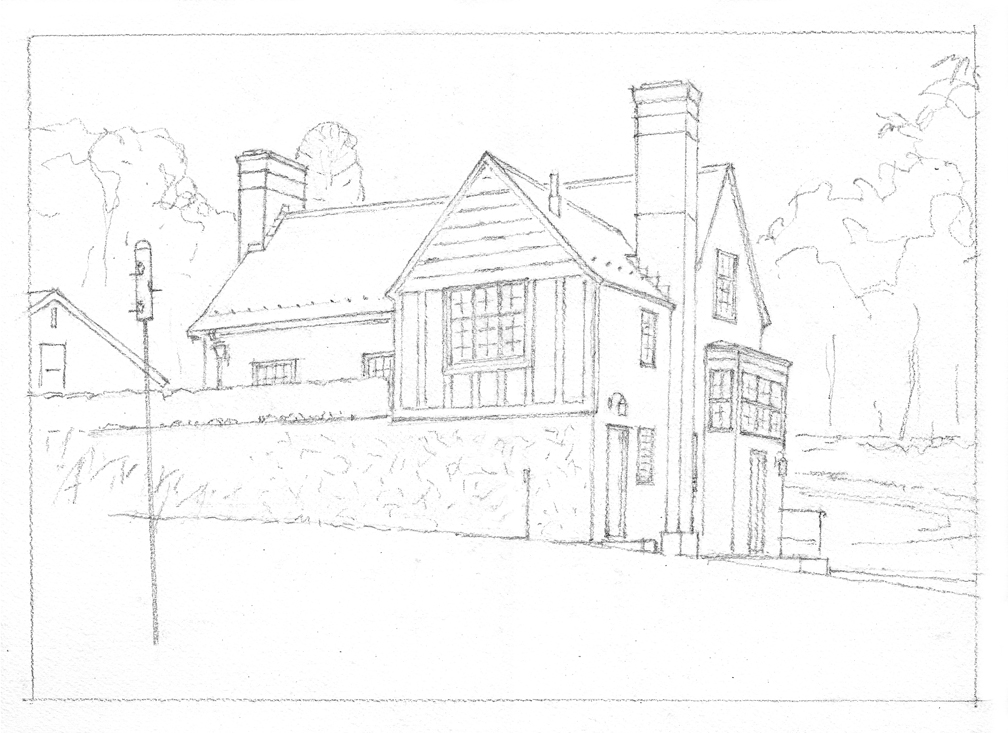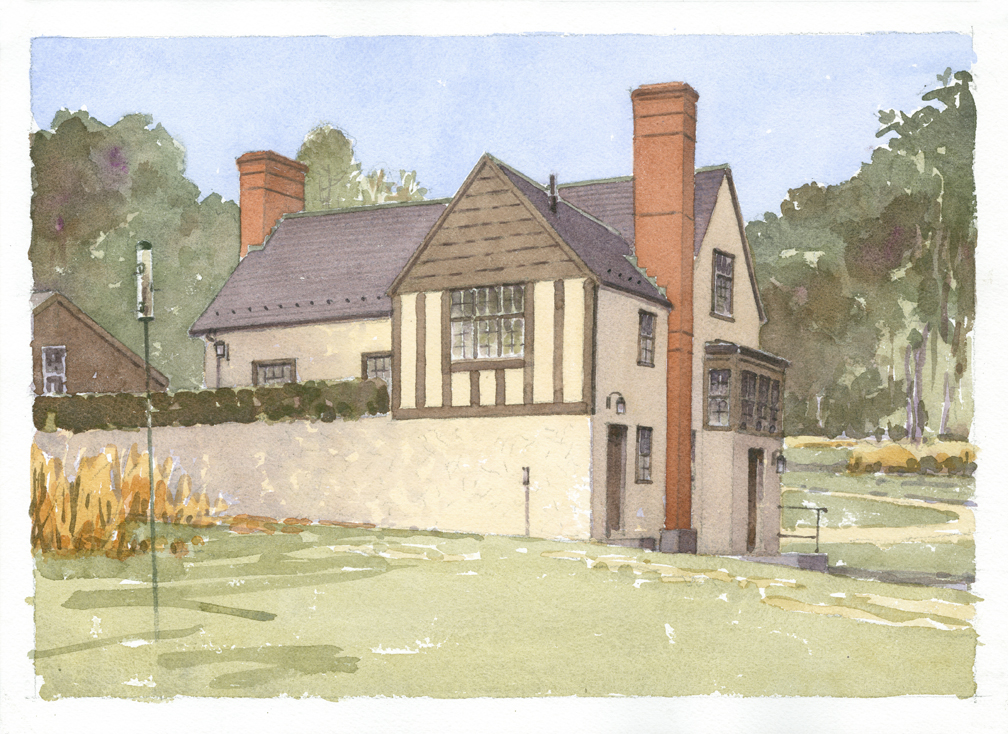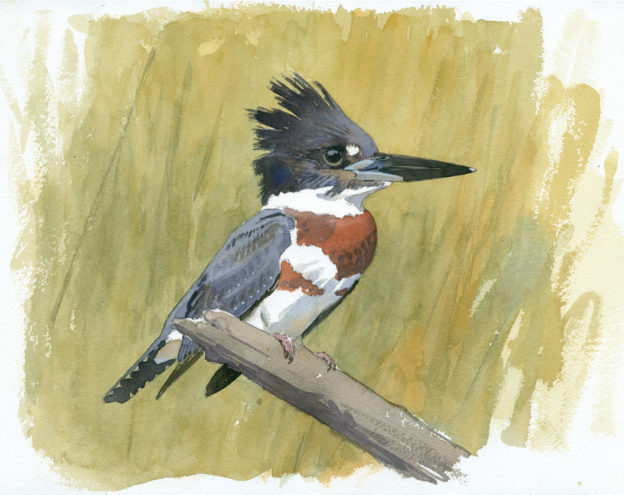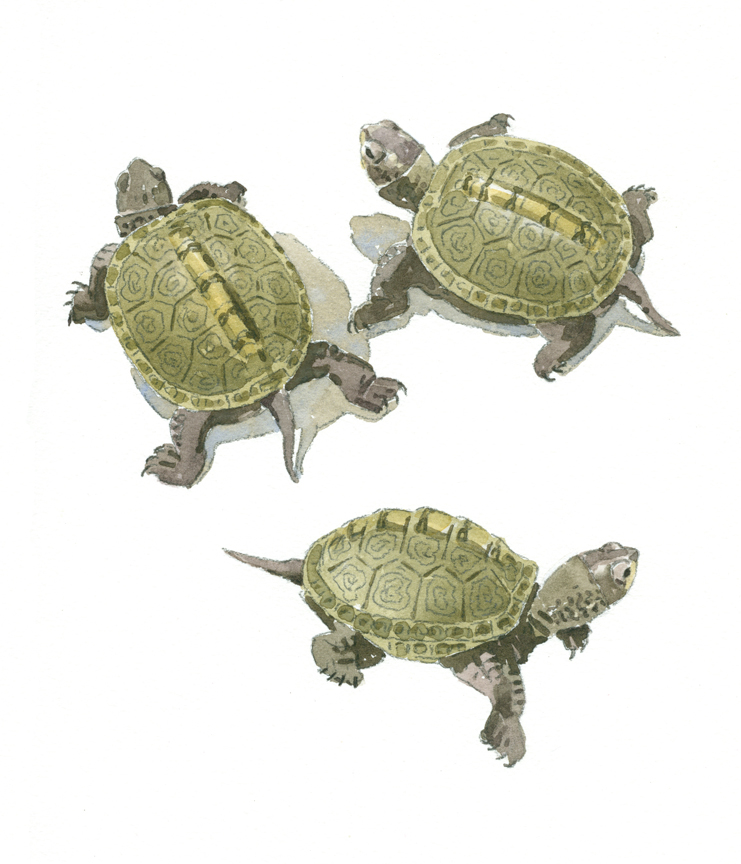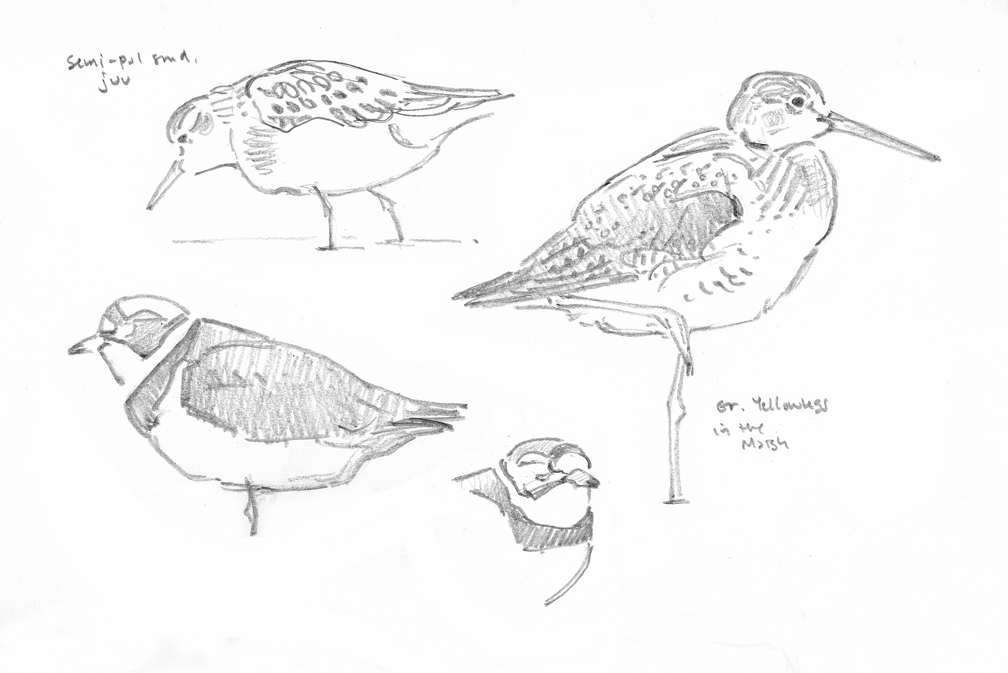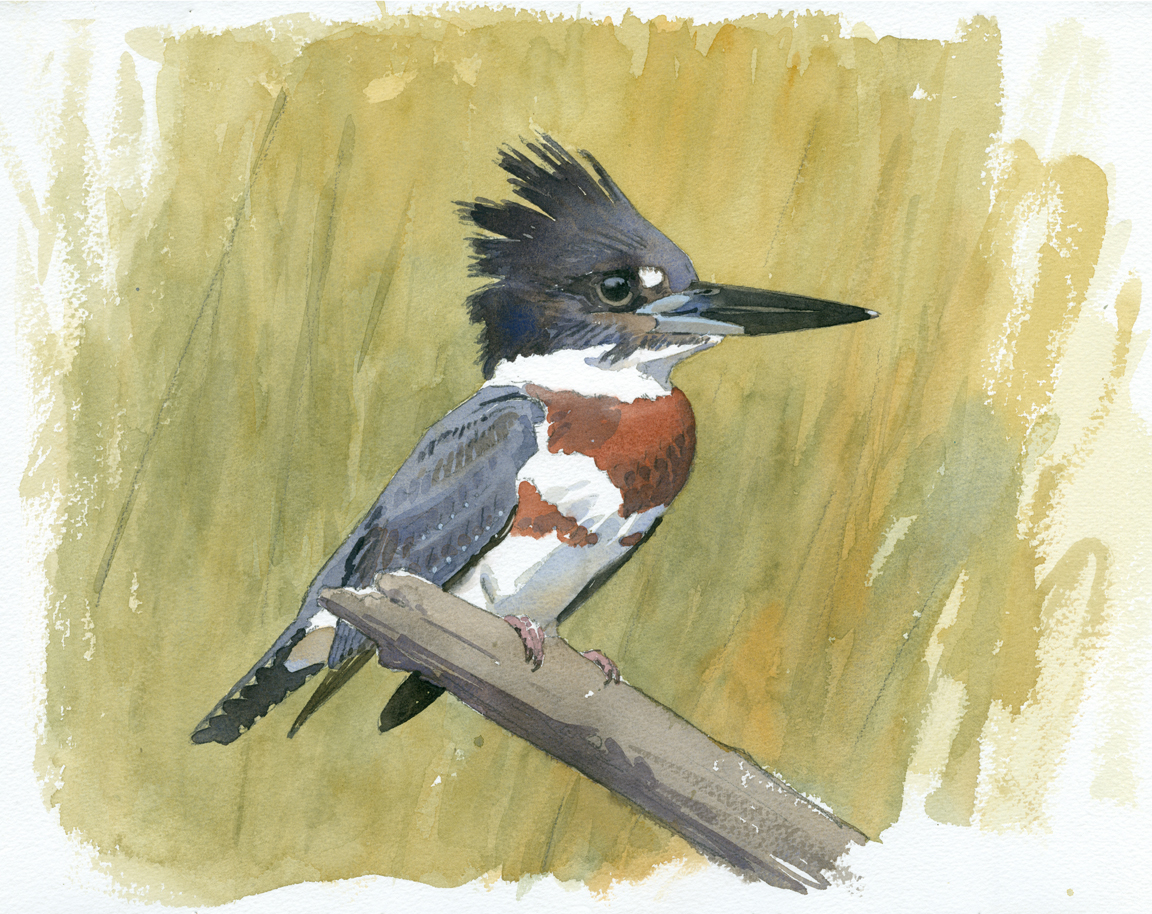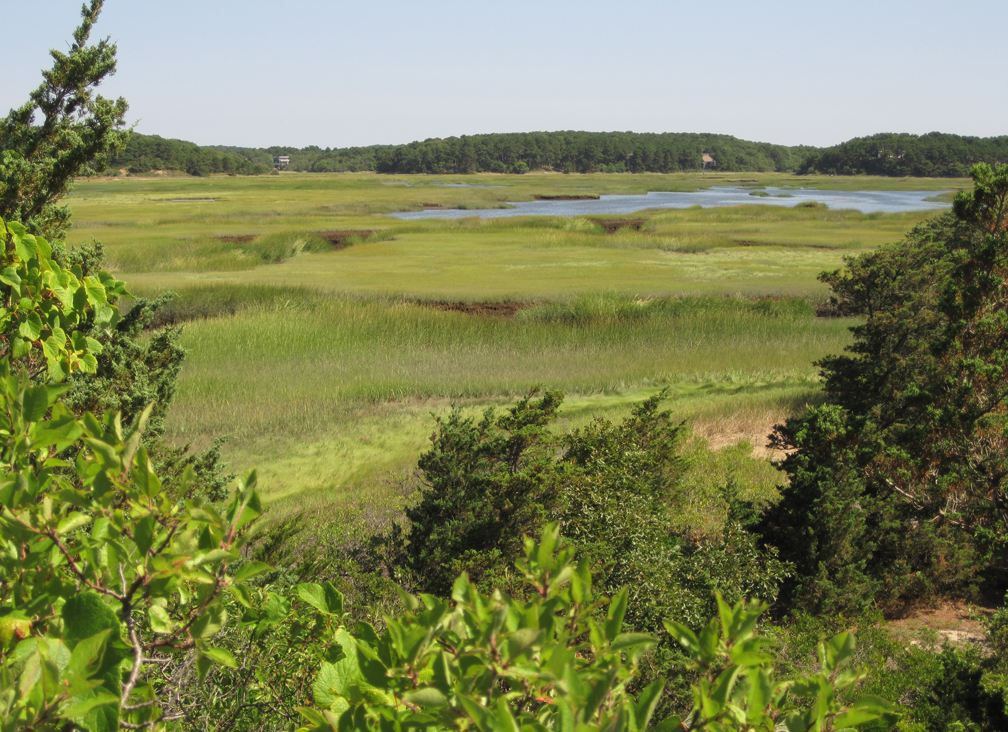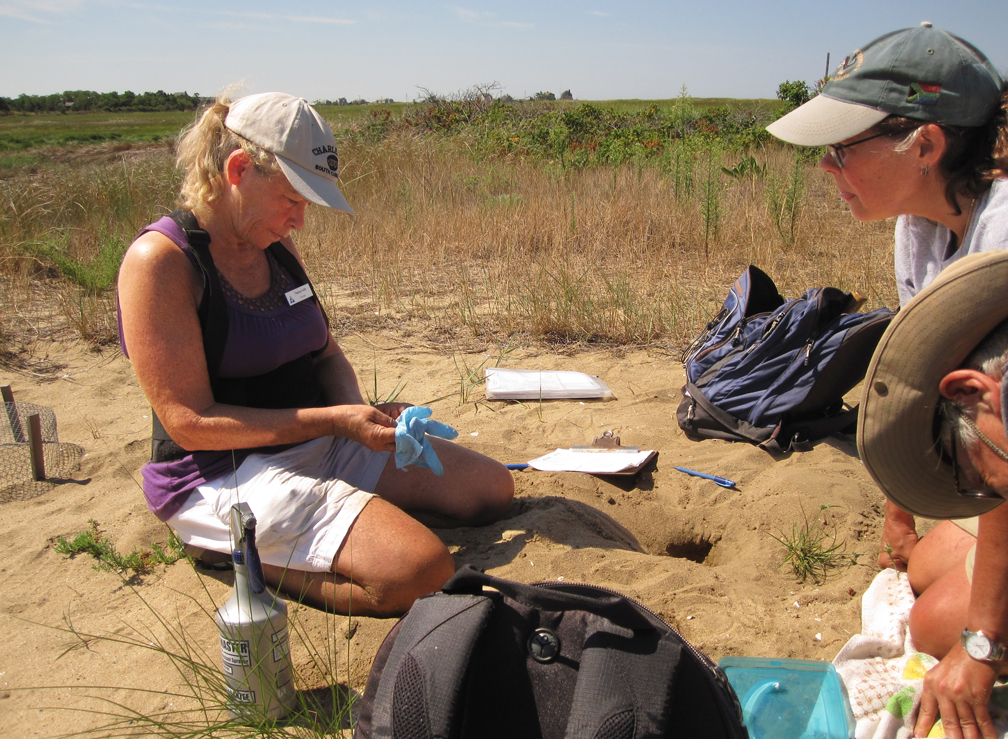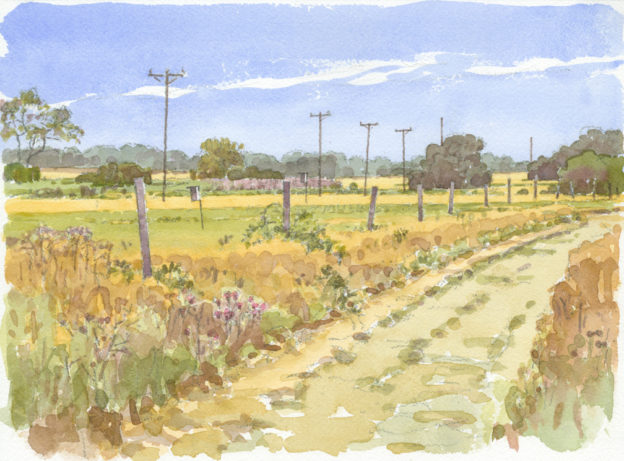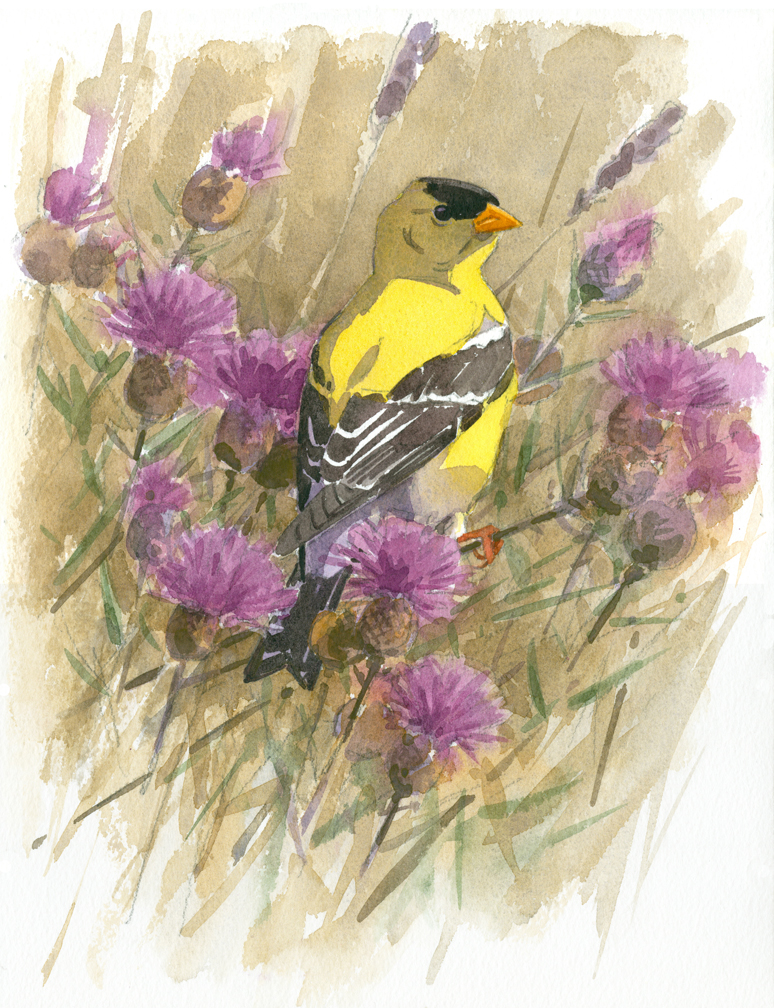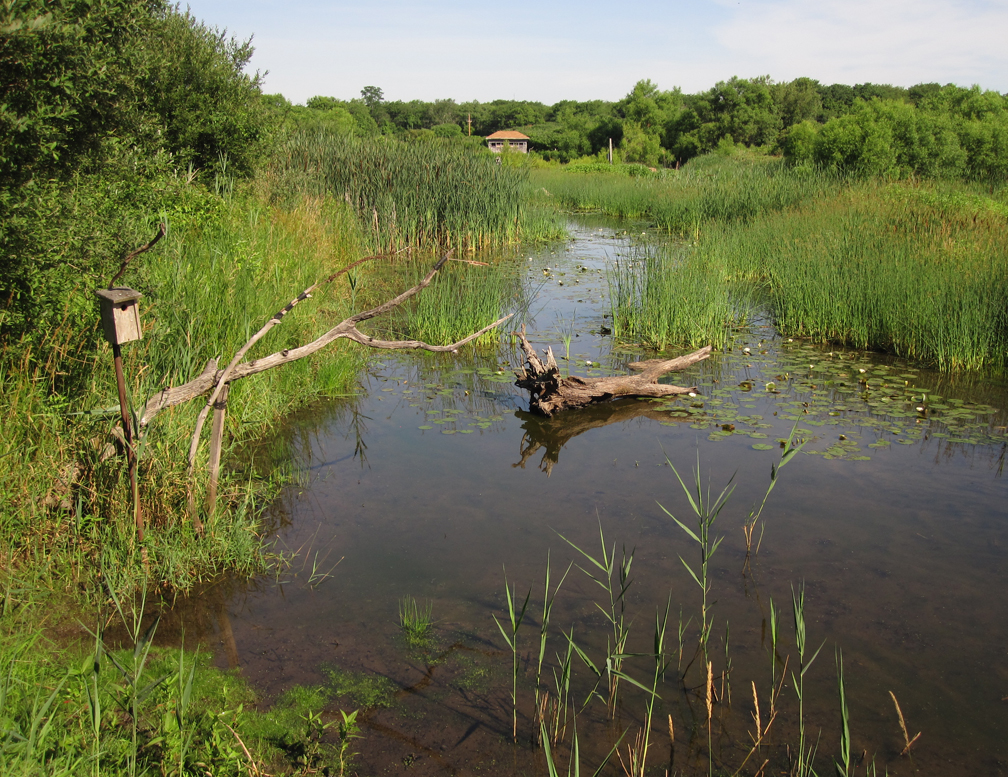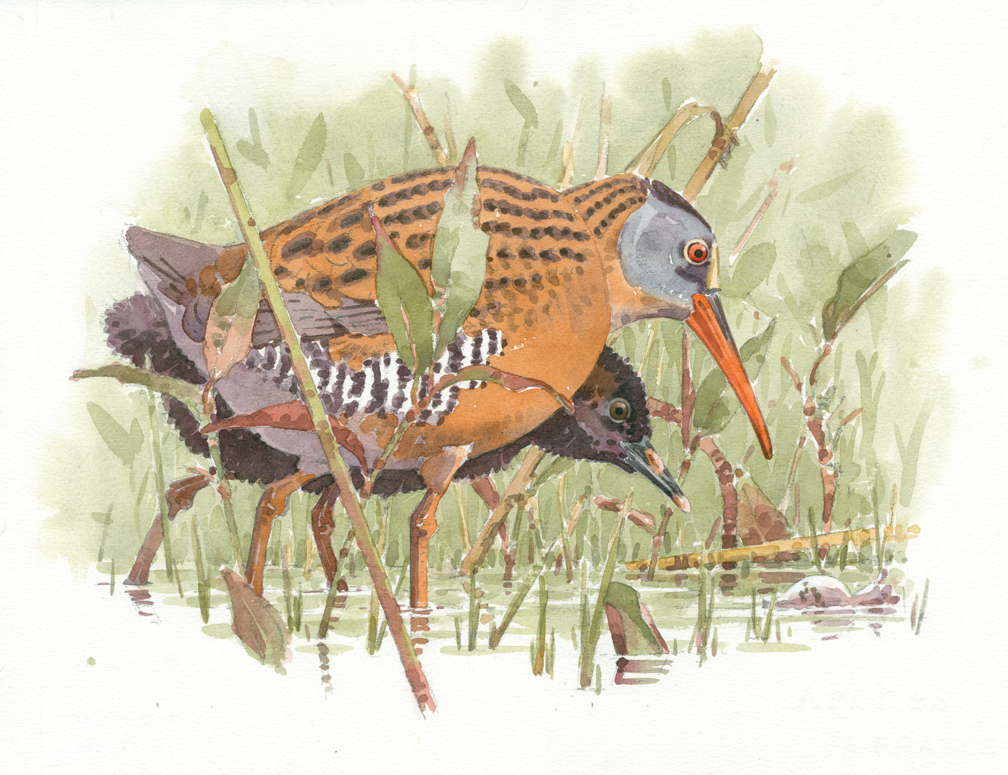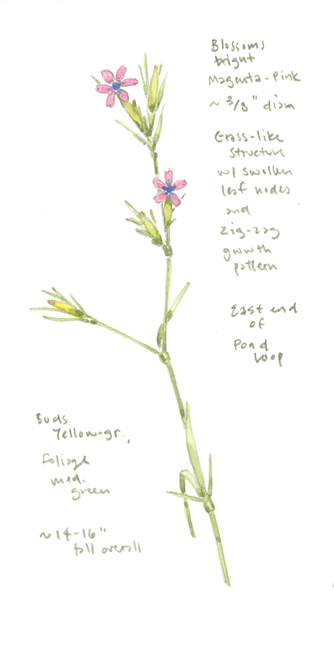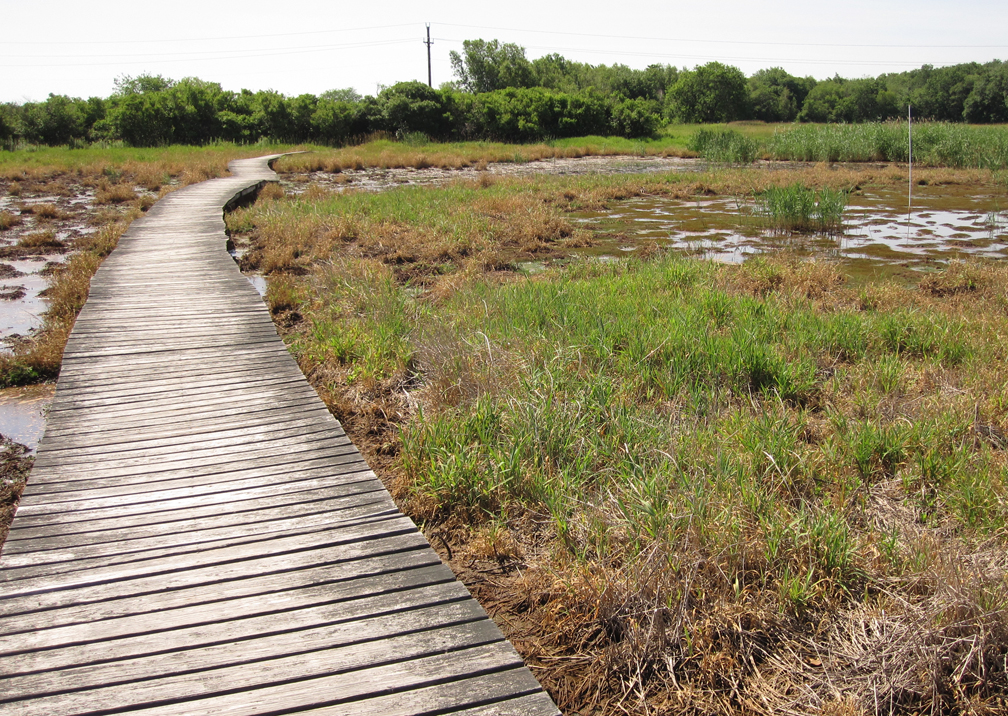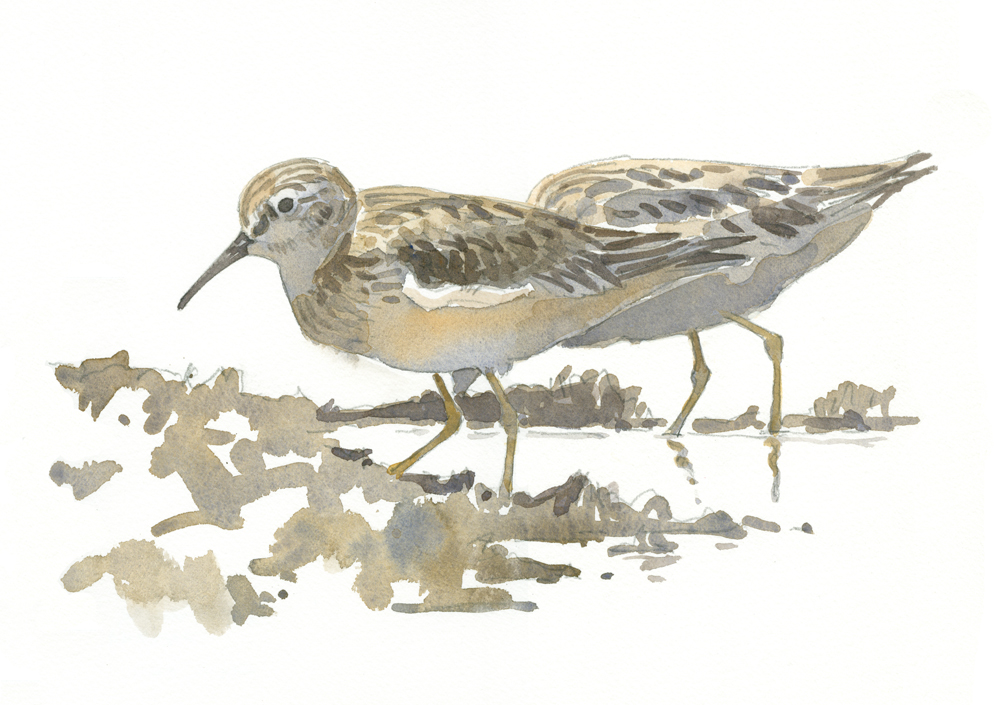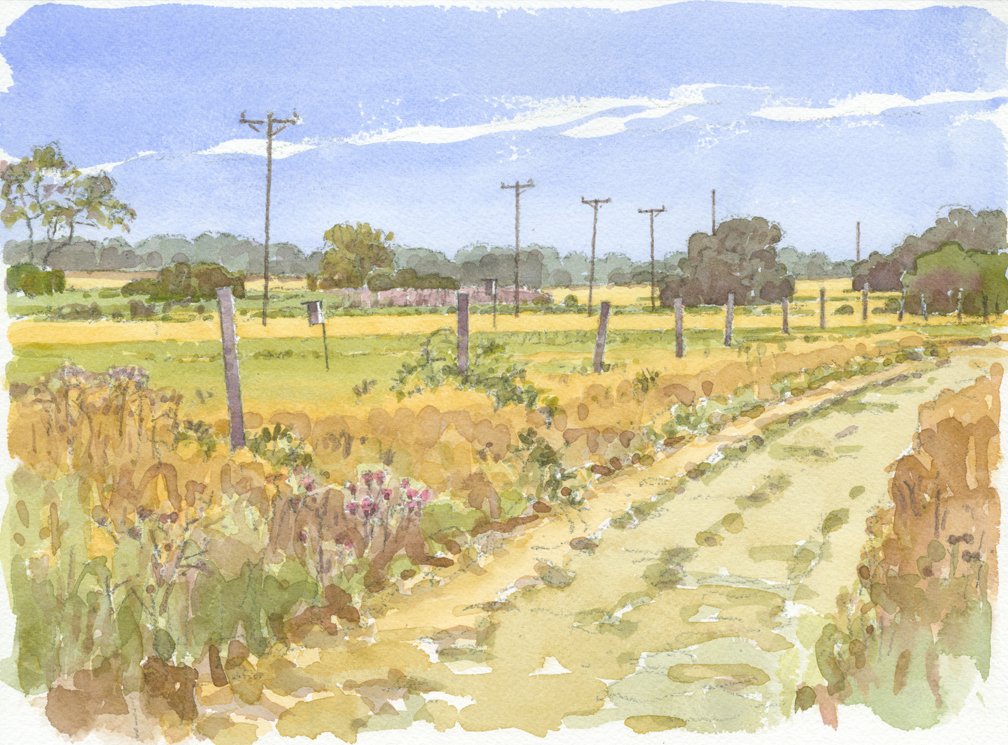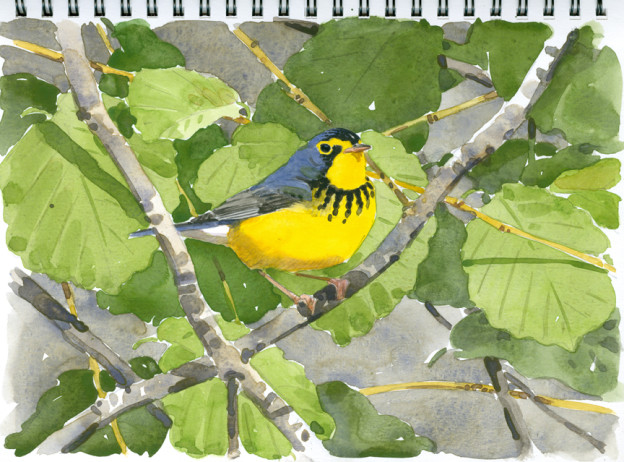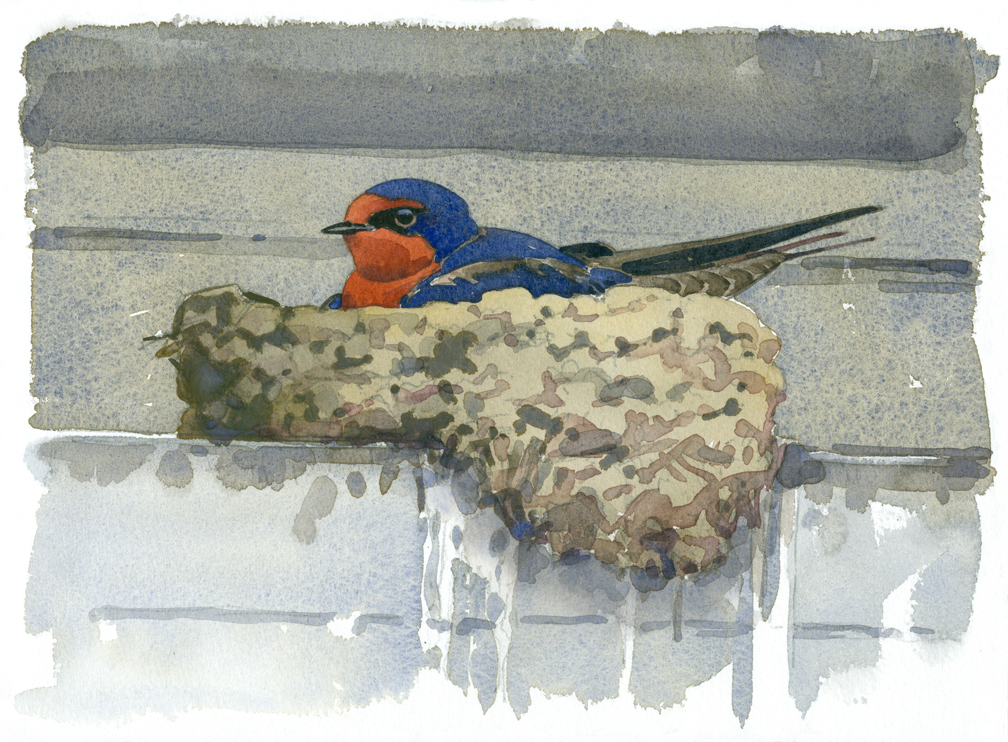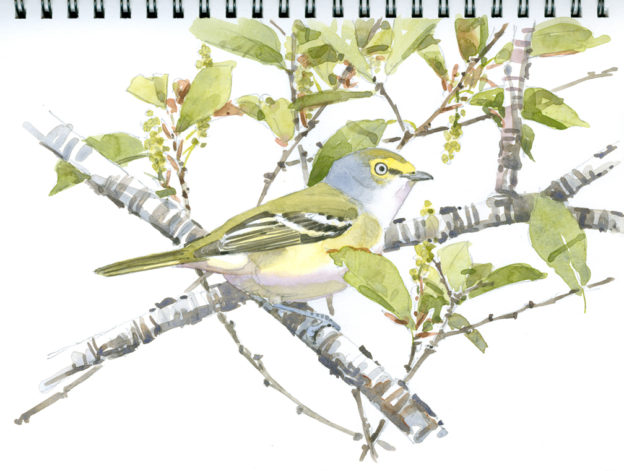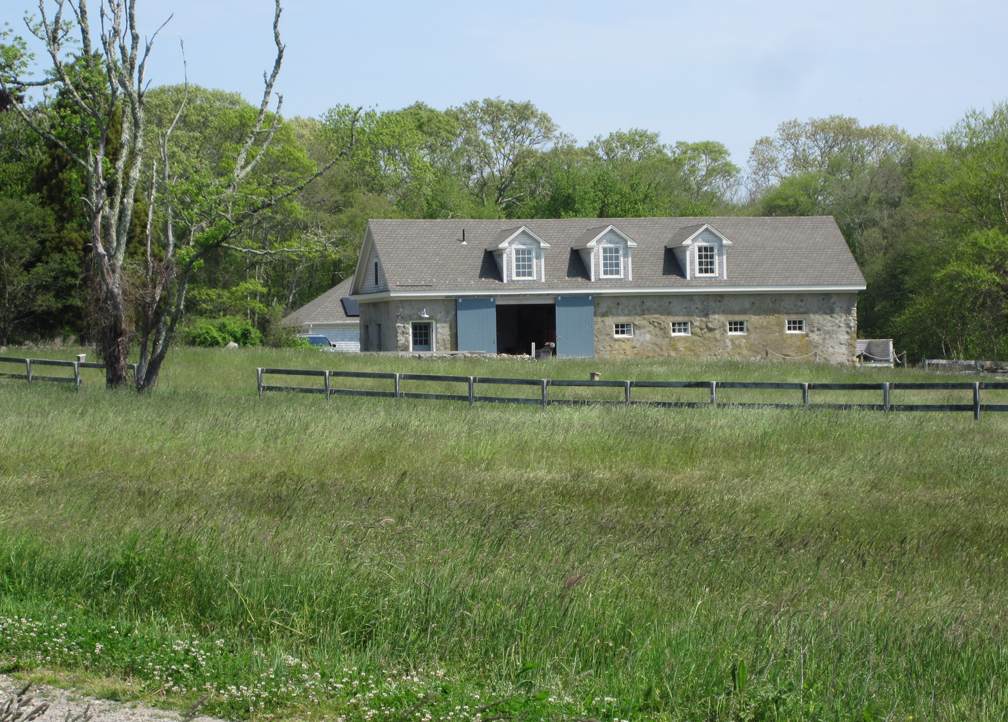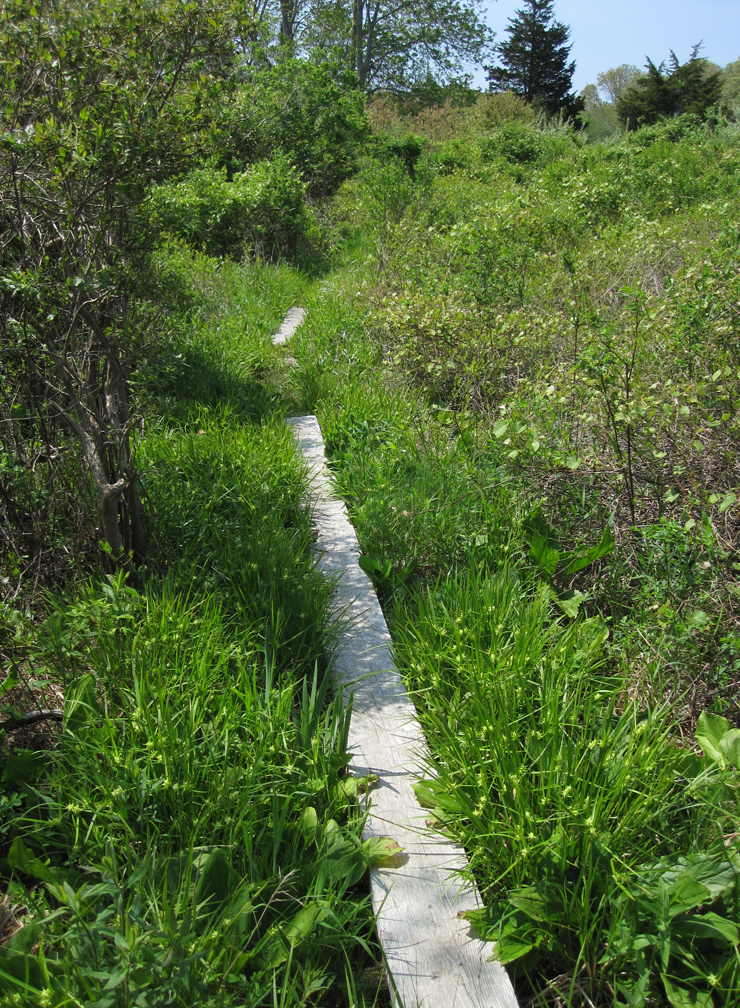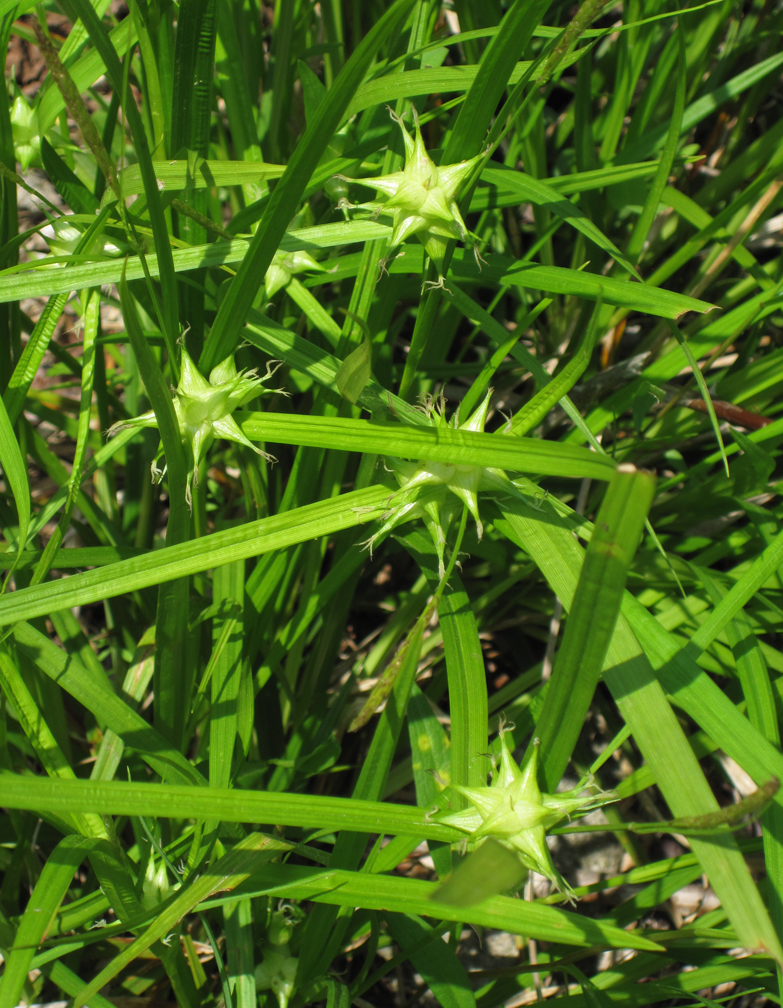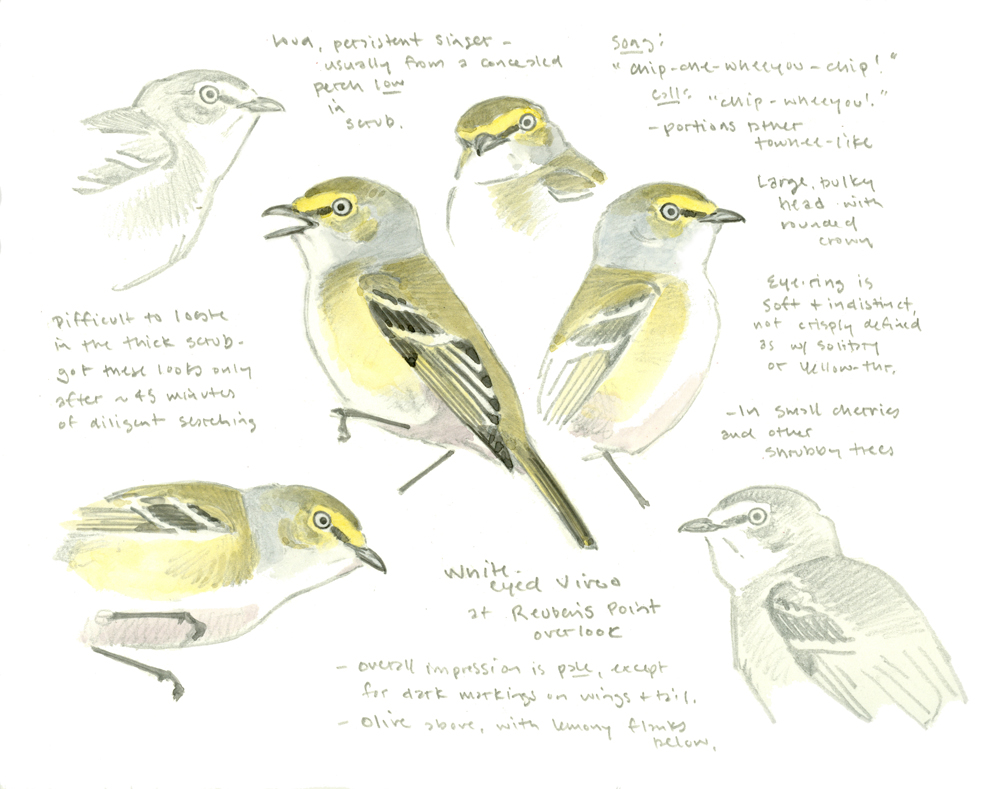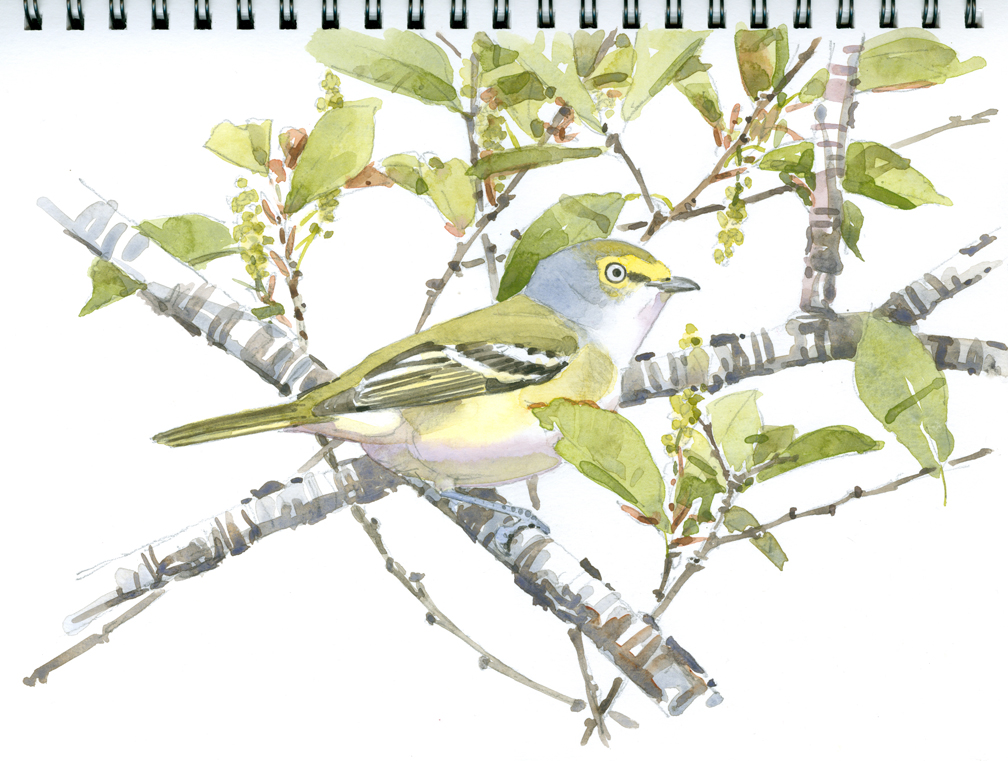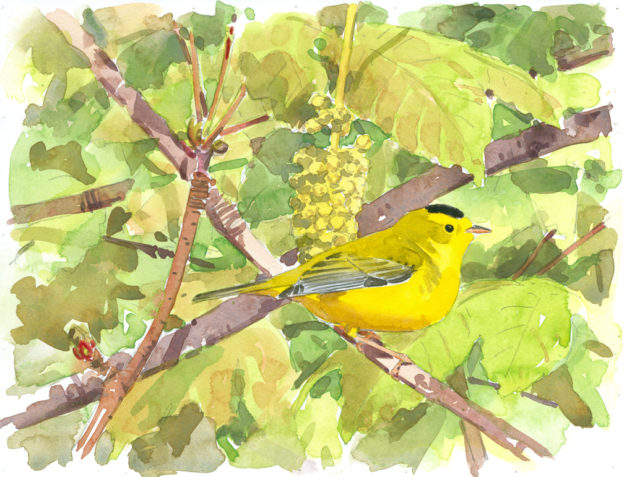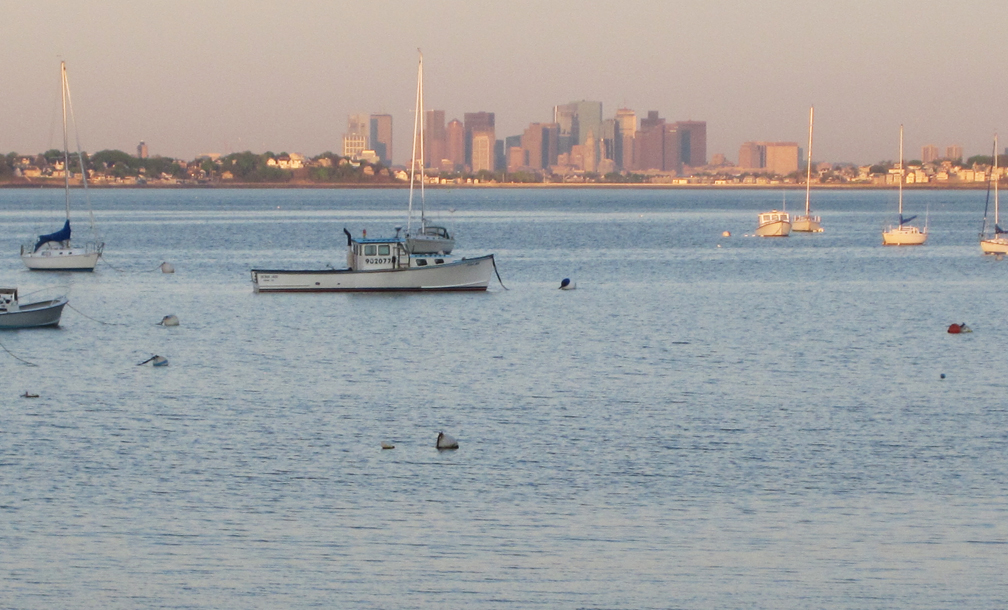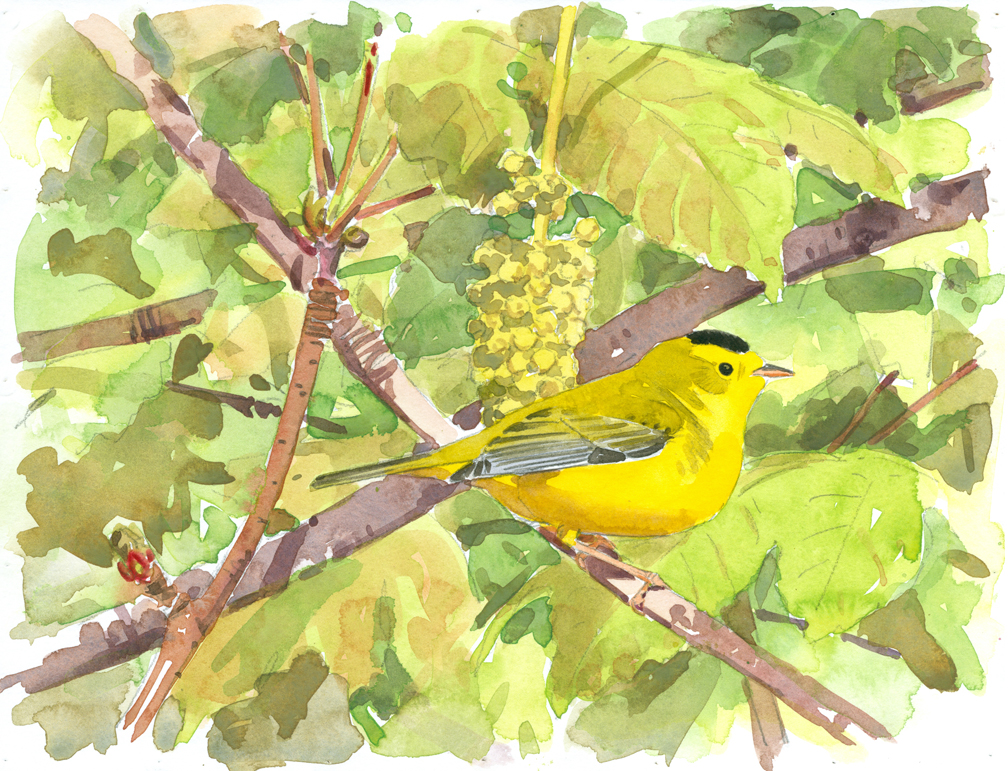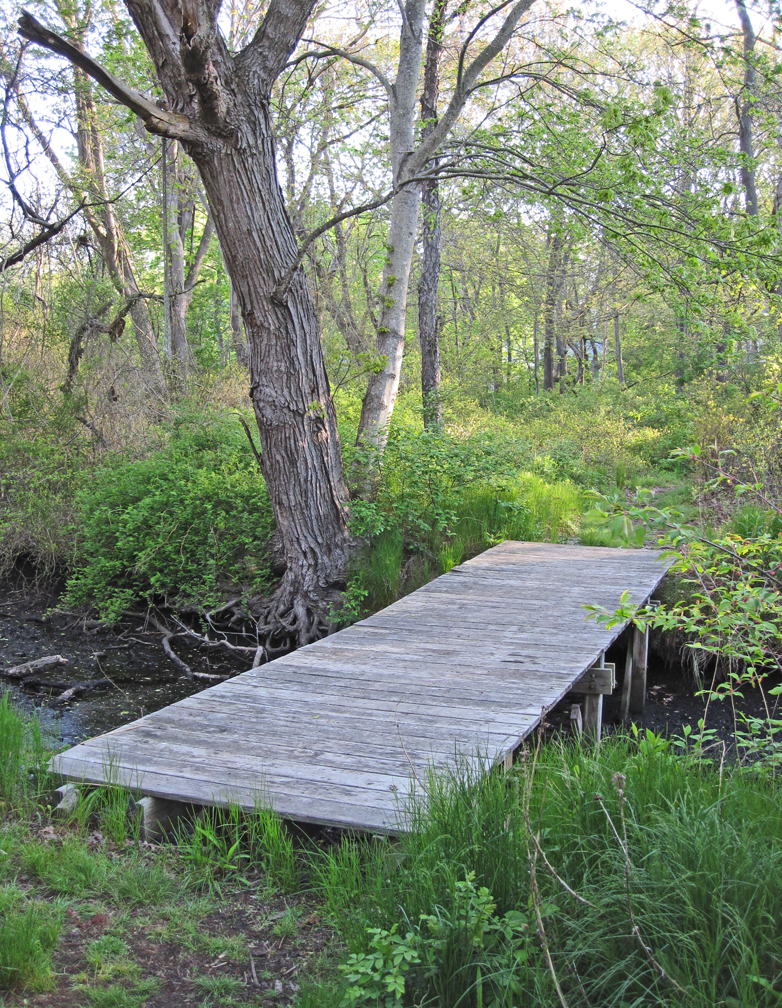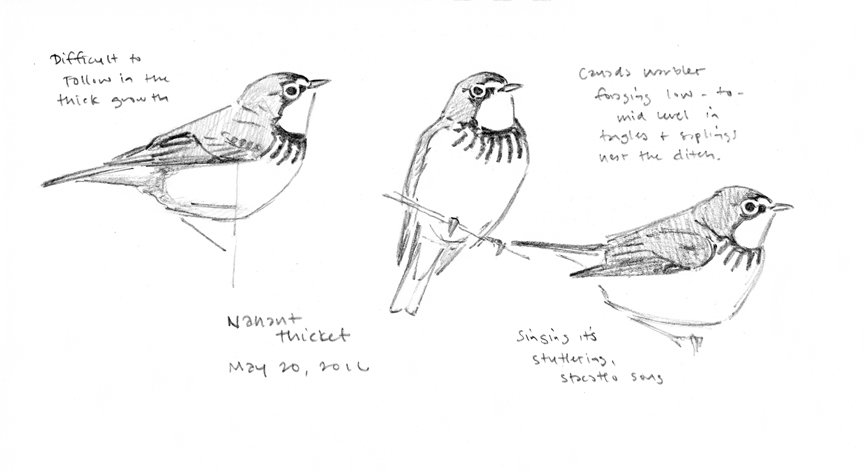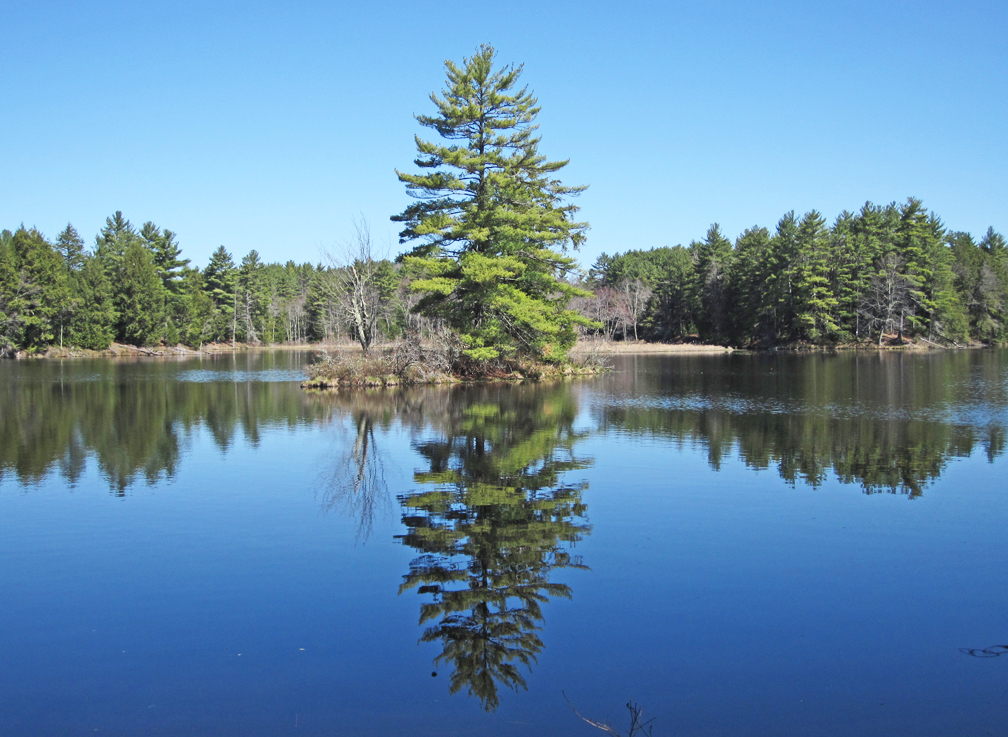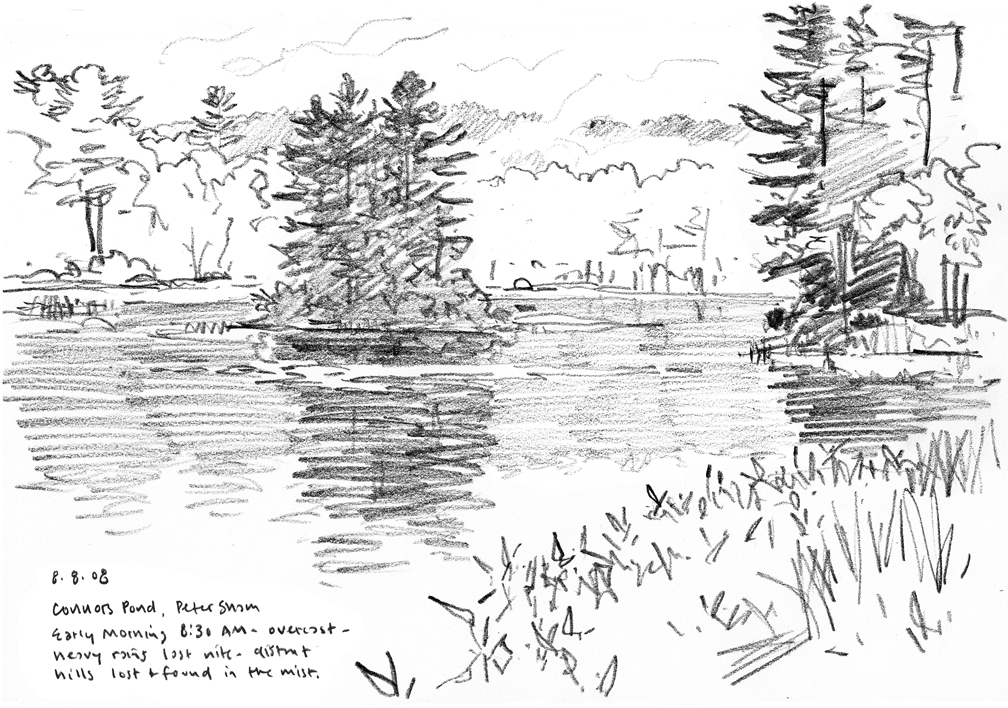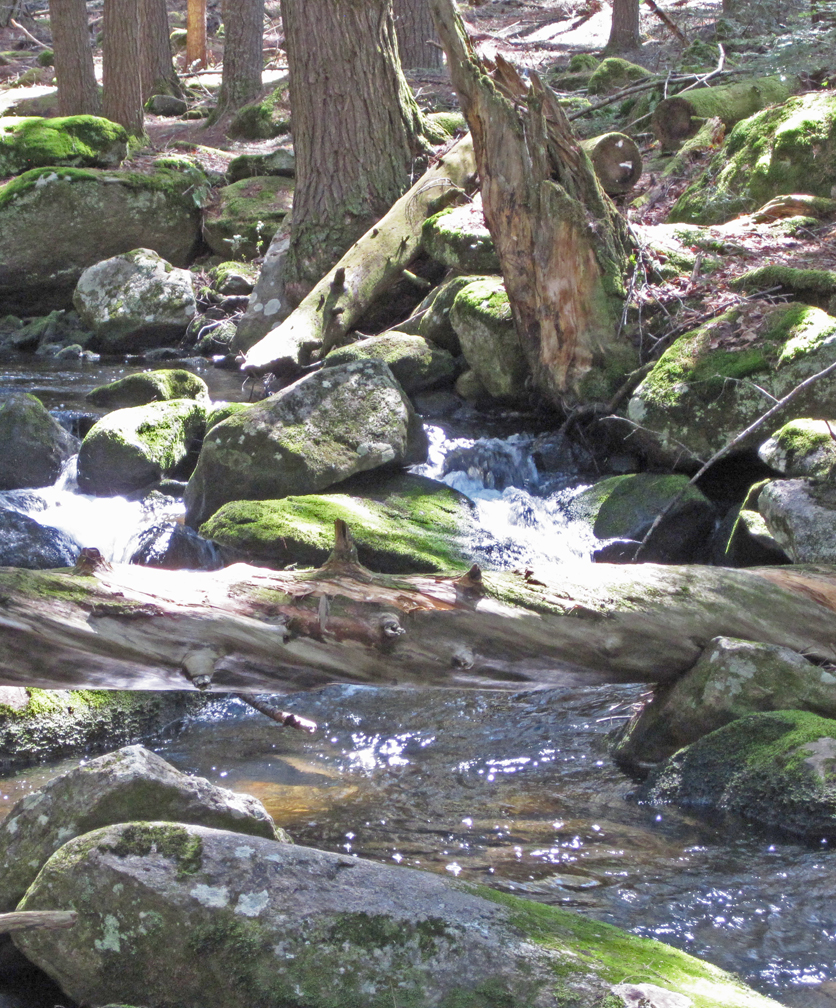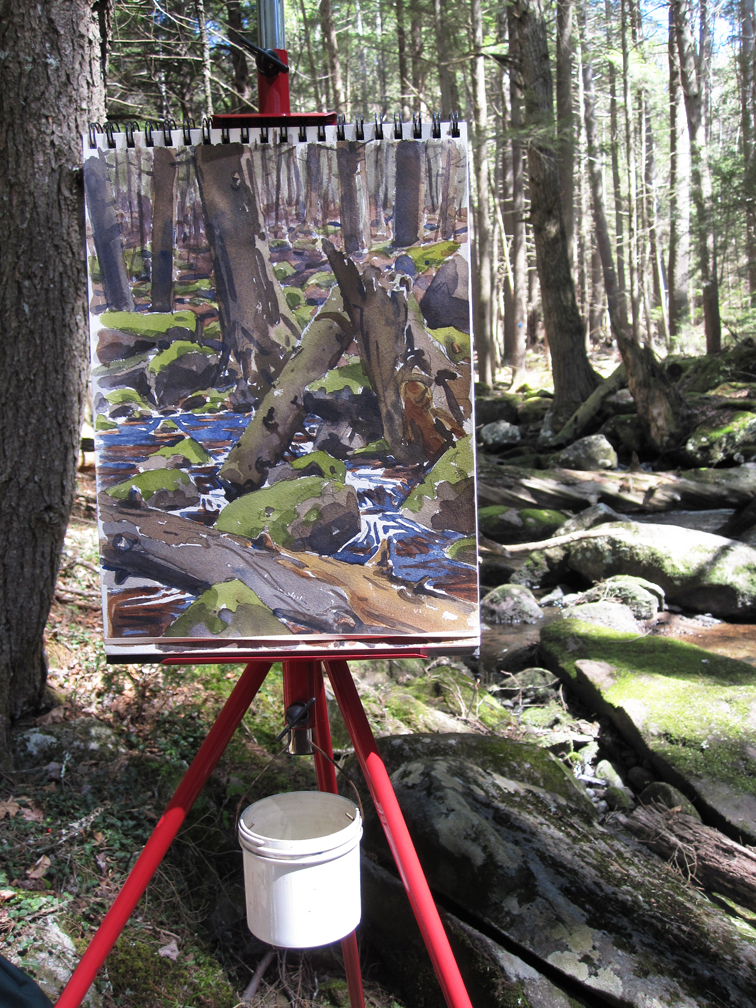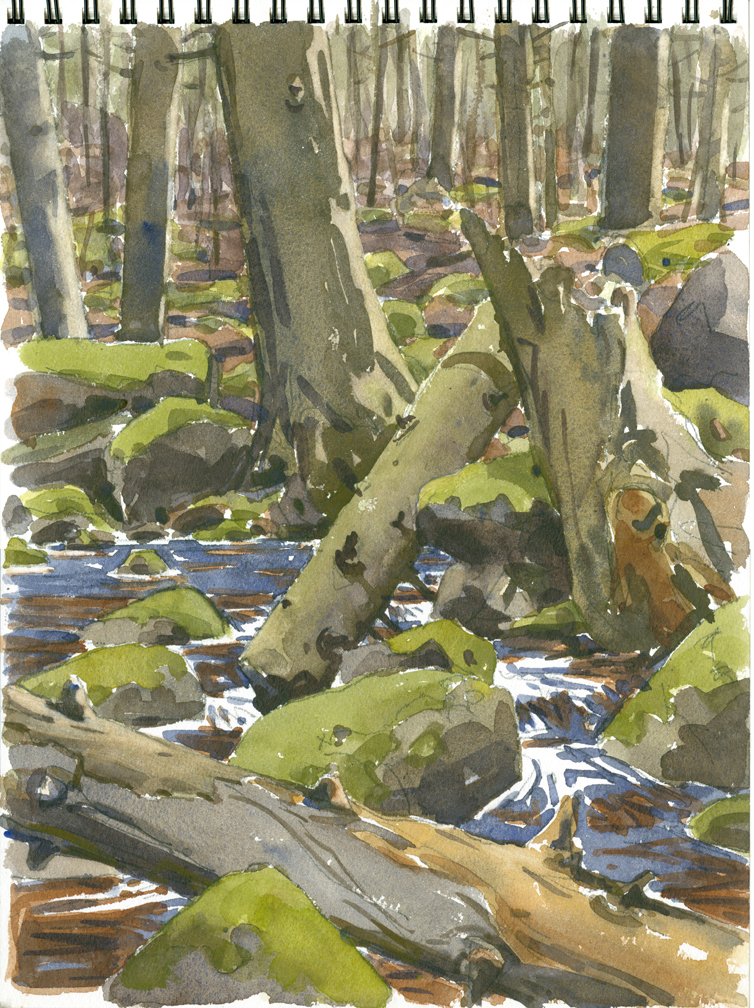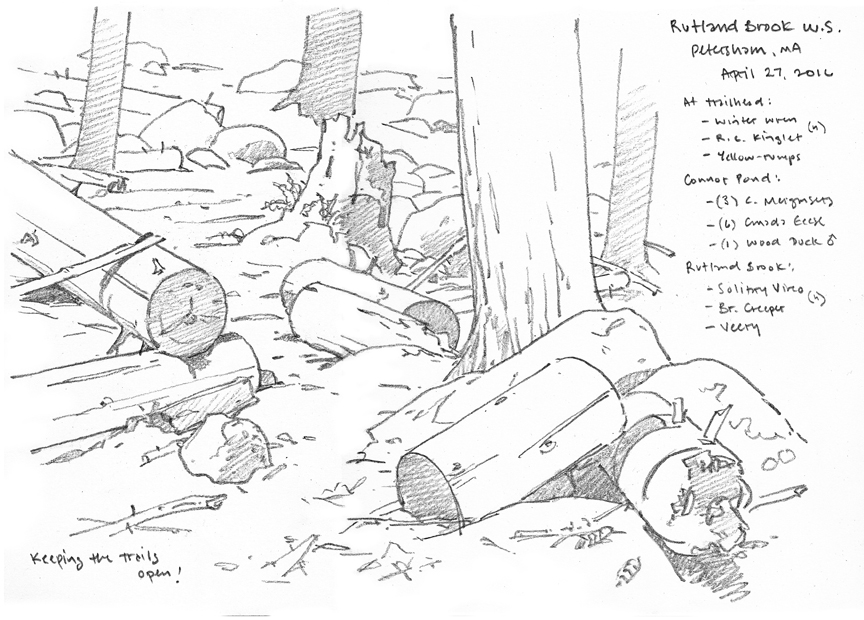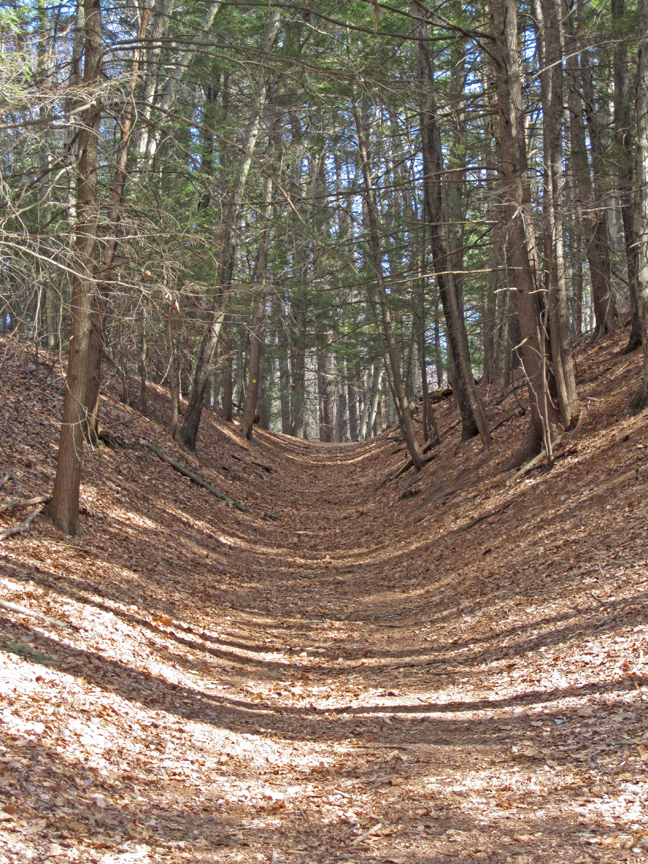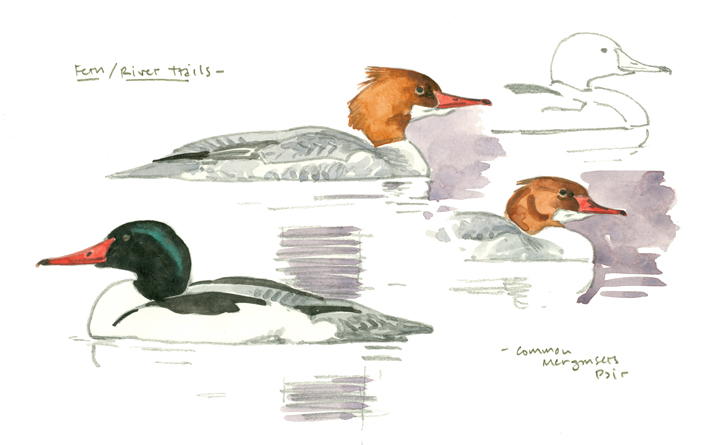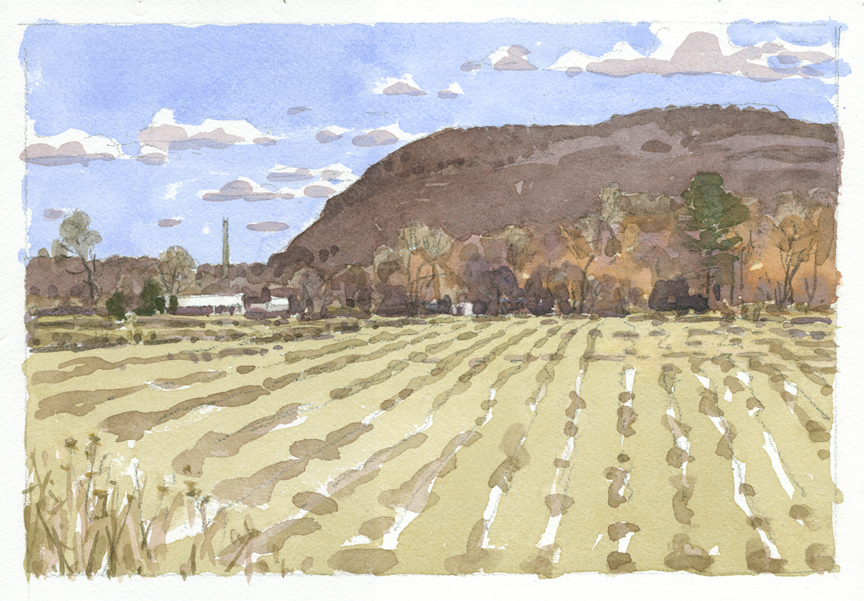November 3 – 6, 2016
Sesachacha Heathlands Wildlife Sanctuary, Nantucket

sketchbook studies of scrub oak, pencil and watercolor, 7″ x 9″
I spent the early morning hours of my second day on Nantucket at Hummock Pond, which abuts Mass Audubon’s Lost Farm Wildlife Sanctuary. As any New England birder will tell you, November is “duck time”, and Hummock Pond is an excellent place to take in the show. The light is good this morning, and an excellent variety of waterfowl are present, including canvasbacks, wigeon, scaup, bufflehead, gadwall, Canada geese and mute swans. With a little searching, I also locate a single redhead and a single Eurasian wigeon!
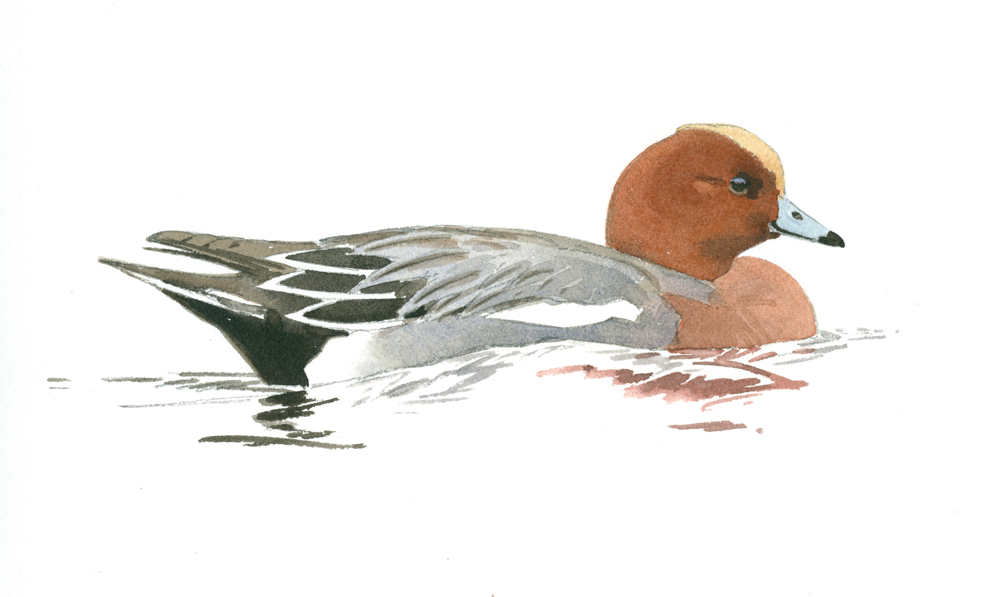
Eurasian Wigeon, watercolor on Arches coldpress, 9″ x 12″
Canvasbacks are the NFL linebackers of the duck world, with necks like Gronkowski! They exude strength and power. A flock of two dozen “cans” are present when I first arrive, but most of them take flight within a half hour, and I’m left to study the four or five stragglers that remain.
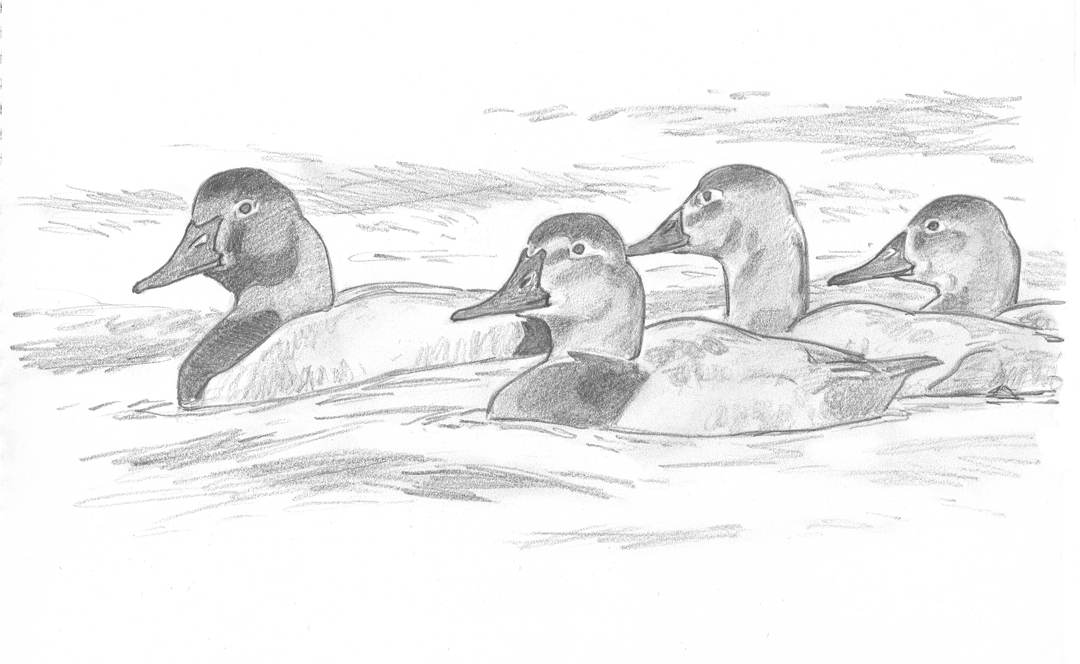
pencil study of canvasbacks, 11″ x 14″
Most of the ducks at Hummock Pond are quite far off – easy to I.D. with the scope but too distant for sketching. I try to approach a group of wigeon more closely, but they spook and take off, so I content myself with sketching some nearby mute swans and buffleheads, filling a page in my sketchbook.
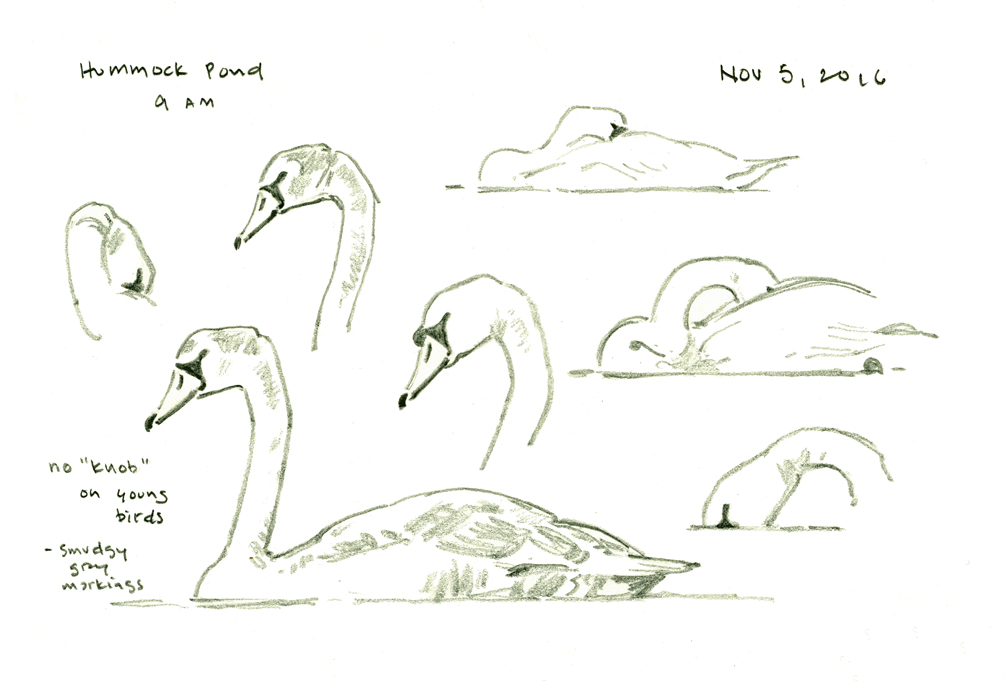
sketchbook studies of mute swans, 6.5″ x 12″
As I prepare to leave, some movement catches my eye abit further down the shore. It’s a smartly patterned juvenile pectoral sandpiper. It affords me stunning, up-close views with the scope, and the morning light is perfect to bring out every detail. The bird is actively feeding, and in constant motion, but I make some pencil studies to explore its characteristic shapes and gestures, then take some digital photos. Back in the studio, I determine to make a more comprehensive study.
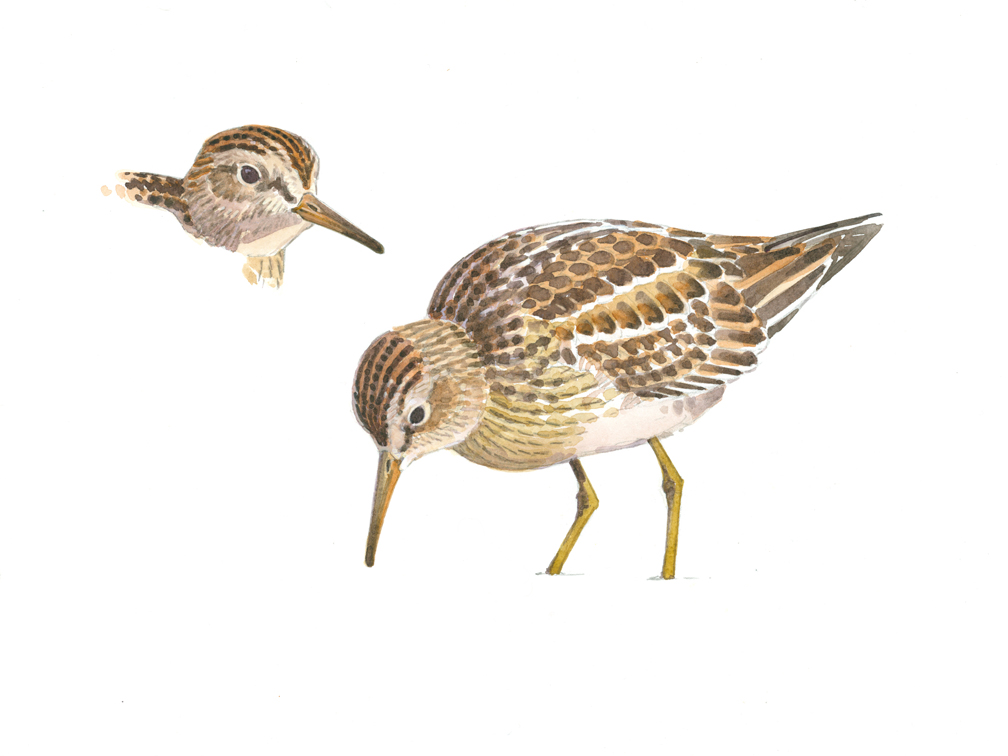
Juvenile Pectoral Sandpiper, watercolor on Arches hotpress, 10″ x 13.5″
The challenge with a bird like this is to avoid over-rendering the details – and in the process, destroying any sense of life. I struggle to maintain a light touch, despite the fact that to do the bird justice, I need to render almost every individual feather.
At Sesachacha Pond, (it’s pronounced SACK-a-ja!, like a sneeze, according to Edie) I find a single Forster’s Tern perched on a small lobster bouy or net float. It scissors its wings and tail to maintain balance, and hunkers down in the breeze. I especially enjoy the way the color of the bouy reflects onto the birds’s undersides, giving it a glowing belly!
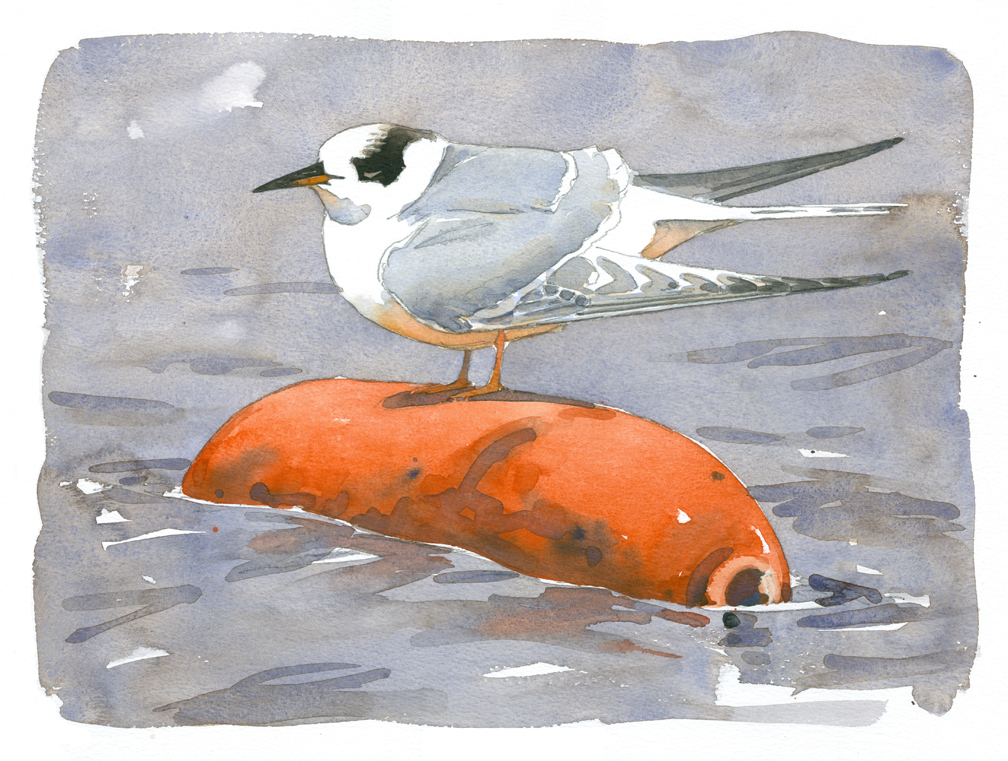
Forster’s Tern at Sesachacha Pond, watercolor on Winsor & Newton coldpress, 12″ x 15.5″
Although there should still be a few common terns around at this late date, the only tern I saw during my visit to Nantucket was this one.


